

Which catamarans have daggerboards?
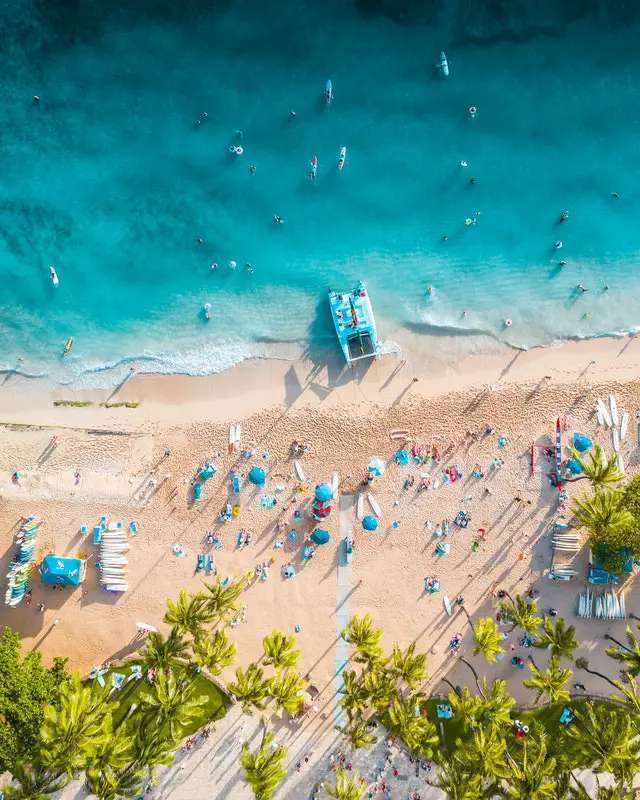
After researching catamarans we have made a list of catamarans with daggerboards. Performance means a great deal for us, so we are looking at the pros and cons of daggerboards, and would like to share our knowledge in this article. If you know of any boats that should be included in this article, please let us know.
Why choose a catamaran with daggerboards?
Daggerboard catamarans are usually higher performing than those without. Not only because of the daggerboard itself but due to the specific focus on performance especially in these types of vessels.
Usually, that focus also makes them lighter as the shipyards have tweaked the materials used to make them light. Often they are designed by the most renowned experts to make the best hulls.
The most important reason to choose daggerboards is performance. They sail closer to the wind when sailing upwind, and they are usually faster than those who focus more on comfort.
Not that daggerboard cats are uncomfortable, but the daggerboard compartment takes up a bit of space from the living area inside the hulls. And you will have to decide if it is worth the decrease in comfort compared to the enhanced performance.
Another reason for choosing daggerboards is the possibility to anchor on shallow waters, as when the daggers are lifted, the draught is often around 3’ or 1 meter or even less.
Catamarans with daggerboards
A list of catamaran models with daggerboards:
- Sud Composites
- Soubise / Freydis – Tournier Marine
French-built catamaran. Well sailing and luxurious.
Also French catamaran. Reviews are pretty good. Easy sailed.
Brazilian built catamaran from 2013. Only this model has daggerboards.
designer Philipe Pouvreau. 30 of them were built before 2008, and after that, a dozen more were built in various custom shipyards. One should therefore be aware of eventual modifications or deviations in the design of the later models.
But the quality is still great, also on the late models, and they have successfully circumnavigated, and are still.
Founded by Alan Adés in 1990, and in 1999 they signed with VLPL, a group of Architects who specialized in multi-hull designs for the competition.
This resulted in the Switch 51, a very well-performing catamaran, which amongst others are known for very decent speed in even moderate wind speeds. They did however not build that many, before switching to building custom catamarans.
Three main models, are still in production:
Soubise 49 Croiseur Soubise 56 Soubise 70
Is not very well known, 27 feet
- Scionning Known to be very high performance.
Benefits of having daggerboards on a catamaran
High performance (speed and efficiency in various wind directions. Especially in upwind directions.)
Can utilize shallow waters, with the boards raised. Typically 3 feet or even less, which means that you can anchor away from the crowd and walk ashore.
Generally, you will have much more anchorage space to choose between.
Disadvantages of daggerboards
More work, more to know and learn, their place in the boat may limit the comfort.
Costly. Adds around 30.000 $ to the construction price.
Why choose daggerboards over fixed keel?
The choice of having daggerboards is mostly a compromise between comfort and performance. Daggerboards make the cat able to sail closer upwind, and the boards are made to enhance the speed.
Boats with fixed keels are sometimes slower, usually also heavier, but also more comfortable, as they have more living space. And if you are sailing short passages, the heavy boat is a good choice.
But if you are going to cross the oceans, the difference in performance is remarkable. It can be several weeks longer crossings compared to higher performing cats.
Daggerboards are for sailors who expect to make longer passages, and who have some experience sailing.
Related Posts
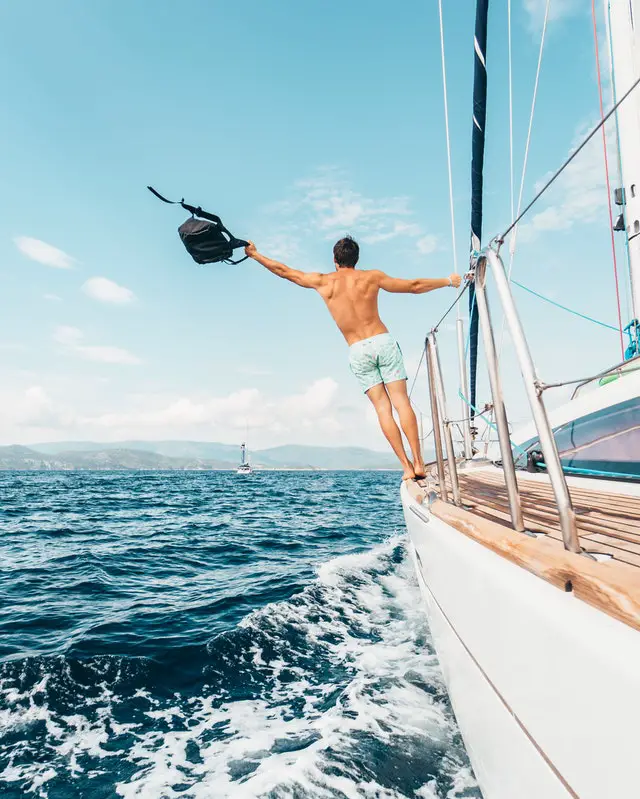
Should you own or charter a boat?
I could give you many reasons why not to buy a boat, but they would be the same reasons not to have a child. Unknown…
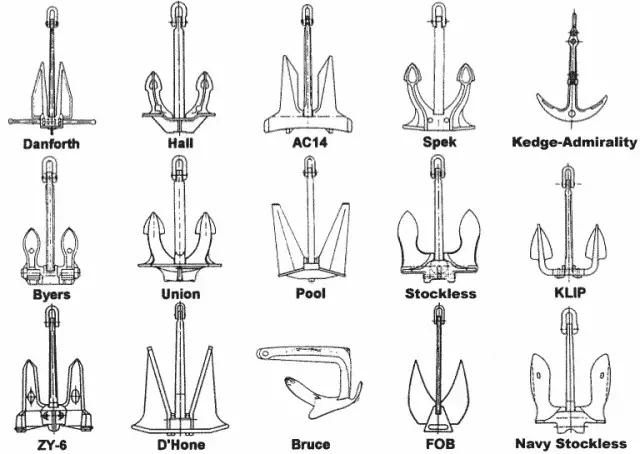
How Anchors Work and All You Need to Know about Anchoring
In this article, you will not only learn all the basics about anchors. You even get all the more advanced knowledge you need about how…
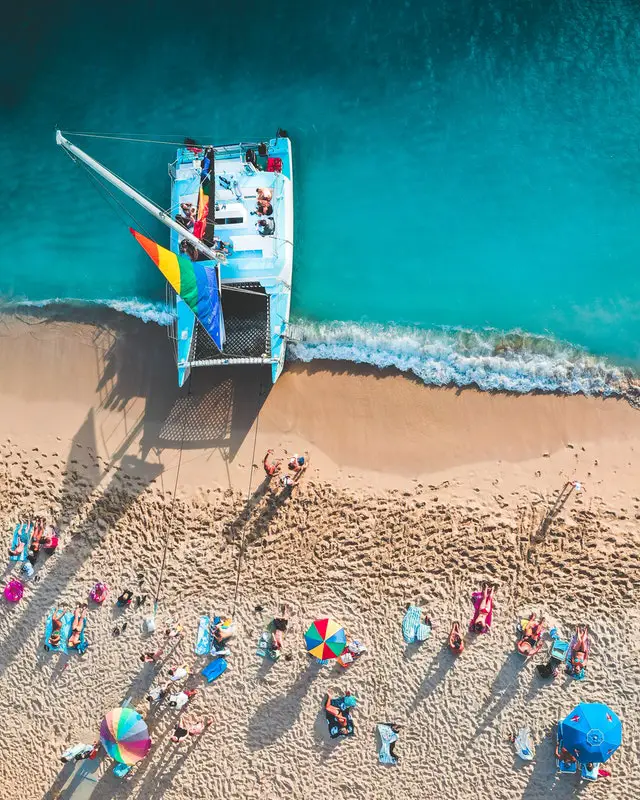
Why catamarans have trampolines
There are several reasons why trampolines are the right choice in catamaran design: It is lightweight, give little resistance to wind and water, is comfortable,…
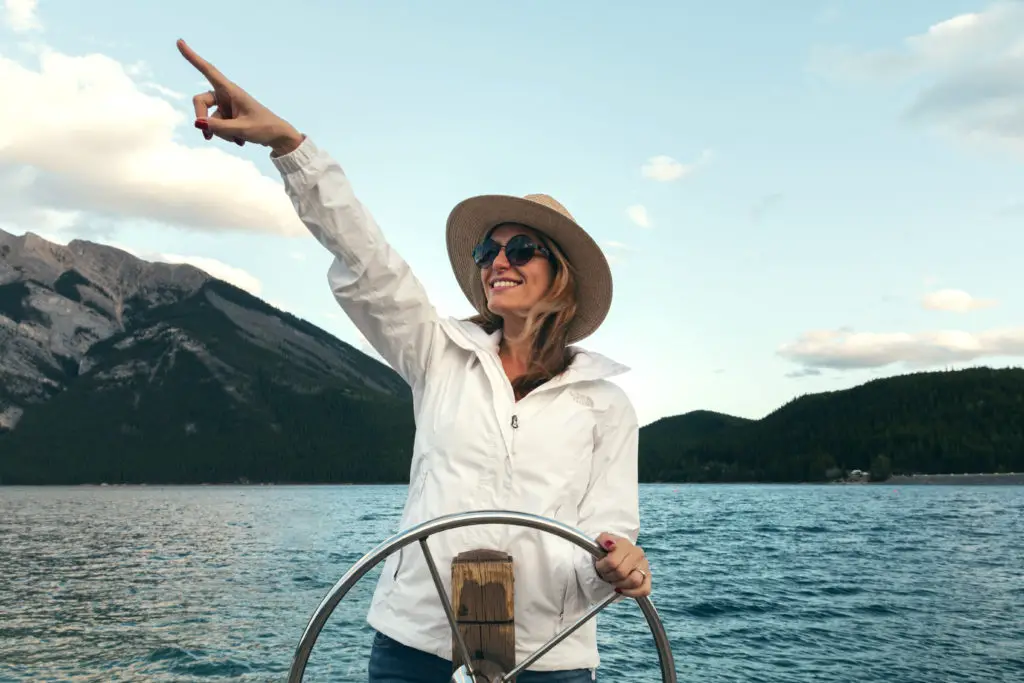
Tips for new sailors in 2022
Are you considering taking up sailing, then you may wonder if sailing is a dying hobby? In this article, we would like to answer some…

What Are Daggerboards on a Catamaran? (An In-Depth Look)
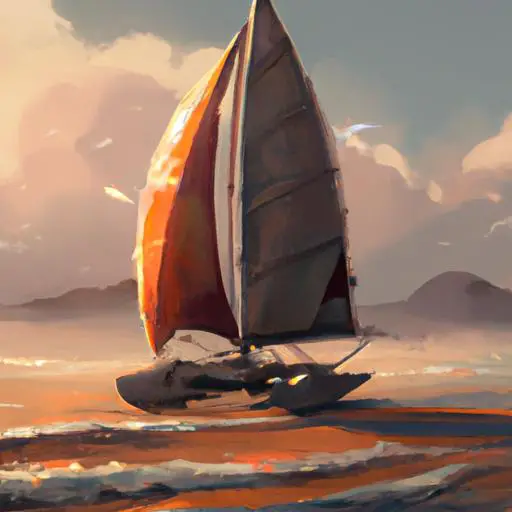
Have you ever wondered how catamarans move so fast and efficiently through the water? The answer lies in daggerboards, a unique and essential feature of these vessels.
Many sailors consider daggerboards to be one of the key advantages of sailing on a catamaran over a monohull sailboat.
If you’re curious to learn more about the science behind this nautical feature, then this article is for you.
Here, we’ll dive into the details of what daggerboards are, how they work, the benefits they offer, the types of daggerboards, and the best practices for maintenance and performance.
By the end, you’ll be an expert on the topic and be able to make an informed decision about the best type of daggerboard for your vessel.
Table of Contents
Short Answer
Daggerboards are vertical boards on a catamaran that can be raised and lowered to provide lateral resistance and stability to the boat.
When the daggerboards are lowered, they provide more stability and can help the catamaran sail closer to the wind.
When they are raised, the catamaran has less resistance and can move faster.
Daggerboards are an important part of a catamaran’s design, as they provide stability and control in difficult weather conditions.
What Are Daggerboards?
Daggerboards are a vertical fin-like structure found on a catamaran, which is a type of sailboat with two hulls of equal size.
Daggerboards are typically located on the centerline of the boat and can be raised and lowered at the skipper’s discretion.
This allows the skipper to adjust the center of effort on the boat, which in turn affects the boat’s maneuverability and control.
At the most basic level, daggerboards provide additional lift and stability to a catamaran, allowing for improved performance in light winds.
They work by creating forward thrust and lift, helping the boat move through the water more efficiently and allowing it to make tighter turns.
Daggerboards also help to reduce leeway, which is the tendency of a boat to drift sideways in the water due to the wind pushing against its sails.
By positioning the daggerboard at an angle, the skipper can reduce the amount of leeway the boat experiences, allowing it to maintain a more consistent course.
Overall, daggerboards are a key component of sailing catamarans and can have a significant impact on the performance of the boat.
With the right setup, they can make a boat faster, more maneuverable, and easier to control in a variety of conditions.
For sailors looking to get the most out of their catamaran, understanding how to use daggerboards is essential.
How Daggerboards Work

Daggerboards, also known as centerboards, are a vertical fin-like structure found on a catamaran.
They are typically located on the centerline of the boat and can be raised and lowered at the skippers discretion.
Daggerboards are designed to provide the catamaran with additional lift and stability in light wind conditions.
This helps to improve the performance of the catamaran by adjusting the center of effort on the boat, allowing for greater maneuverability and control.
When the daggerboards are lowered, they act as an underwater keel, providing additional stability and lift.
This helps the catamaran to cut through the water more efficiently, allowing it to move faster and with greater control.
The daggerboards also help to prevent the boat from drifting sideways in the wind, which can be a common issue with monohulls.
The daggerboards also help to reduce the amount of heeling (leaning) experienced when sailing upwind, making the sailing experience more comfortable and enjoyable.
When the daggerboards are raised, the catamaran will be more maneuverable and have improved performance in light wind conditions.
This is due to the reduced drag caused by the daggerboards not being in the water.
The raised daggerboards will also help to reduce the amount of heeling experienced when sailing downwind, making the sailing experience more comfortable and enjoyable.
The use of daggerboards can significantly improve the performance of a catamaran in light wind conditions and is a key component of sailing catamarans.
By raising and lowering the daggerboards, the skipper can adjust the center of effort on the boat, allowing for greater maneuverability and control.
The Benefits of Daggerboards
Daggerboards are an essential part of sailing catamarans for a number of reasons.
The most obvious benefit of having daggerboards on a catamaran is that they provide additional lift and stability, allowing for improved performance in light winds.
By raising and lowering the daggerboards, the skipper can adjust the center of effort on the boat, giving them greater control over the boat’s maneuverability.
This can be advantageous in tricky situations, such as sailing close-hauled or in tight spaces.
Additionally, daggerboards can help reduce drag in certain conditions.
By raising the daggerboards, the boat can be steered more efficiently by using the hulls to provide lift instead of the daggerboards, which can result in less drag and improved performance.
Finally, daggerboards can help improve the safety of a catamaran.
In rough seas, daggerboards can provide additional stability, helping to keep the boat upright and preventing it from capsizing or being damaged.
This can be especially beneficial when sailing in unfamiliar waters or in bad weather conditions.
In summary, daggerboards are an invaluable component of sailing catamarans.
They provide added lift and stability, can be used to adjust the center of effort on the boat, reduce drag, and improve the safety of the boat.
With all these features, it’s no wonder that daggerboards are a must-have for any serious catamaran sailor.
Types of Daggerboards

When it comes to daggerboards, there are two main types that can be found on a catamaran: retractable and fixed. Retractable daggerboards are typically made of fiberglass and can be raised and lowered at the skipper’s discretion. This allows the skipper to adjust the center of effort of the boat, providing improved maneuverability and control. Fixed daggerboards are usually made of wood or metal and are permanently mounted in the centerline of the boat. These boards provide an extra layer of stability and lift to the catamaran, allowing it to perform better in light winds.
In addition to the two main types of daggerboards, there are also some other variations that can be found on some catamarans.
A daggerboard trunk is a type of daggerboard that is mounted inside the hull of the boat.
This allows the daggerboard to be raised and lowered without having to be removed from the boat.
A foil daggerboard is a type of retractable daggerboard that is designed to provide additional lift and stability to the catamaran, allowing it to perform better in heavier winds.
There are also battened daggerboards, which are a type of fixed daggerboard that is designed to provide additional lift and stability to the catamaran.
No matter which type of daggerboard is chosen, they all provide additional lift and stability to a catamaran, allowing it to perform better in different wind conditions.
By understanding the different types of daggerboards and how they can improve a catamaran’s performance, skippers can make the most of their sailing experience.
Daggerboard Maintenance
Daggerboard maintenance is an important aspect of owning and sailing a catamaran.
It is important to keep the boards in good condition to ensure they are performing as efficiently as possible.
This means periodically checking the boards for wear and tear, making sure they are properly lubricated and free of debris, and ensuring that the fastenings and connections are secure.
Regularly inspecting the boards for signs of corrosion or damage is also important.
If damage is found, it should be addressed immediately to prevent further damage and to ensure that the boards are performing as efficiently as possible.
In addition to inspecting the boards, it is important to keep them lubricated to ensure smooth and efficient performance.
The best way to do this is by regularly applying a lubricant specifically designed for marine use.
This will help reduce friction and keep the boards in good condition for longer.
It is also important to keep the fastenings and connections of the boards secure.
This includes the bolts that attach the boards to the frame, as well as the pins and clips that hold the boards in place.
It is important to inspect these regularly for signs of wear and tear, and to replace them if necessary.
Finally, it is important to keep the boards free of debris or dirt.
This can be done by regularly rinsing the boards off with fresh water after sailing, and by using a soft brush to remove any dirt or debris that has accumulated.
By following these simple maintenance tips, you can ensure that your daggerboards are performing as efficiently as possible and that your catamaran is sailing to its full potential.
Daggerboard Upgrades

The daggerboard is a key feature on catamarans, as it provides lift and stability to the boat.
It is located on the centerline of the boat and can be raised and lowered at the skipper’s discretion.
This allows the skipper to adjust the center of effort on the boat, enabling greater maneuverability and control.
For those looking to maximize the performance of their catamaran, there are several upgrades available for the daggerboard.
A taller daggerboard can be installed to increase the lift and reduce drag, while a lower profile board can provide improved stability.
Additionally, a carbon fiber board can be used to reduce weight, further increasing the overall performance of the boat.
Another upgrade is the addition of a daggerboard trim tab, which allows for more precise control of the daggerboard.
This is especially useful in light winds, as it allows the skipper to adjust the daggerboard to maintain the optimum angle of attack.
This can significantly improve the performance of the boat in light winds.
Finally, there are a variety of shapes available for the daggerboard.
Different shapes are designed to optimize the performance of the boat in different conditions, so it is important to select the shape that best suits your needs.
In conclusion, daggerboards are a key component of sailing catamarans and can have a significant impact on the performance of the boat.
By upgrading the daggerboard, skippers can maximize the performance of their catamaran and improve its overall maneuverability and control.
Daggerboard Performance
When it comes to sailing performance, daggerboards can have a significant impact on a catamaran.
When the daggerboards are up, the center of effort is lowered, allowing the catamaran to sail in light winds with better speed and efficiency.
When the daggerboards are down, they provide additional lift and stability, allowing for improved performance in heavier winds.
The shape and size of the daggerboard also affects the performance of the catamaran.
A wide, shallow daggerboard will provide more lift in light winds, while a narrow, deep daggerboard will provide more stability in heavier winds.
As such, it is important to choose the right daggerboard for your catamaran to get the most out of it.
In addition to improving the performance of the boat, daggerboards can also help reduce drag when sailing upwind.
When sailing upwind, the daggerboards create a venturi effect, which helps reduce the drag on the boat.
This can make a huge difference in performance and can allow the catamaran to reach higher speeds in upwind conditions.
Finally, daggerboards can make a catamaran more responsive to steering.
When sailing downwind, the daggerboards can be used to help the boat turn more quickly and with greater precision.
In this way, the daggerboards can be used to make a catamaran more responsive and agile.
By adjusting the daggerboards, the skipper can adjust the center of effort on the boat, allowing for greater maneuverability and control.
Daggerboards can also help reduce drag when sailing upwind and make the catamaran more responsive to steering.
Final Thoughts
Daggerboards are a key component of sailing catamarans, and their presence has a significant impact on the performance of the boat.
They can provide additional lift and stability, allowing for improved performance in light winds, as well as greater maneuverability and control.
With the variety of daggerboard types, upgrades, and maintenance available, there is something for every boat and sailor.
Understanding how daggerboards work and the impact they can have on sailing performance can help you make the most of your catamaran.
So, take the time to consider the different options and see what daggerboards can do for you.
James Frami
At the age of 15, he and four other friends from his neighborhood constructed their first boat. He has been sailing for almost 30 years and has a wealth of knowledge that he wants to share with others.
Recent Posts
Does Your Boat License Expire? Here's What You Need to Know
Are you a boat owner looking to stay up-to-date on your license requirements? If so, youve come to the right place! In this article, well cover everything you need to know about boat license...
How to Put Skins on Your Boat in Sea of Thieves? (Complete Guide)
There is a unique sense of pride and accomplishment when you show off a boat you customized to your exact specifications. With Sea of Thieves, you can customize your boat to make it look like your...
- Outremer 45
- Outremer 4X
- Outremer 4.zero
- Outremer 52
- Outremer 55
- Outremer 51
- Outremer 5X
- All the Outremer Fleet
- Personalized support
- Blue Water Sailing Seminars
- Our concept
- The Outremer team
- Our commitments
- Construction principles
- Our catamaran services
- After-sales customer service & Quality control
- Offshore Connected Catamaran Maintenance
- Concierge Services
- Our owners’ stories
- FAQ – Outremer catamarans

- Brokerage: used catamarans for sale
- Privacy Policy
- Legal Notice
- Grand Large Yatching
Daggerboards: how to adjust them on your catamaran
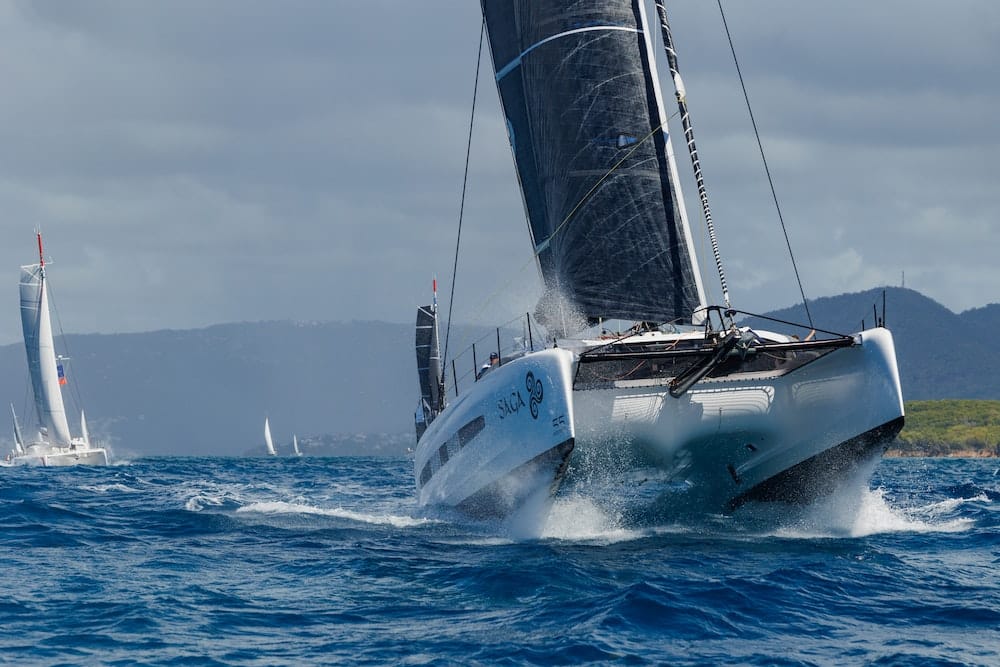
Author : Nikki Henderson
When I asked the Outremer Ladies’ community for suggestions on webinar topics, ‘Daggerboards’ was top of the list. I wasn’t surprised. I don’t think I’ve had a day out on an Outremer with prospective or current owners where daggerboards were not discussed.
It makes sense that there is a curiosity about daggerboards; using them properly is essential if you want your Outremer to perform. What is interesting though, is how confusing people find them.
One thing I’ve realised is that for some people, the issue is similar to my relationship with electronics (hate) and engineering (love). Things I cannot physically see are inherently cloaked in mystery and much more challenging for me to understand. This can be the case with daggerboards: they are hidden underwater and so are often forgotten or misunderstood.
The other reason that daggerboards can be confusing is that they affect not just the performance of a catamaran, but also the safety. Sometimes the theories contradict each other and lead to conflicting advice as to the right and wrong way to use them. In fact, there is no one ‘rule’ about daggerboards. The key, as with anything on a boat, is to understand the reasoning behind the basic daggerboard practices, so that you can make your own decision based on your own unique circumstances that you encounter at any particular time.
I hope this blog will help you build this critical foundation of understanding so that you can set sail safely and with confidence. Daggerboards – like sail trim – is a subject of continual learning. See this as step 1 in the life-long journey.
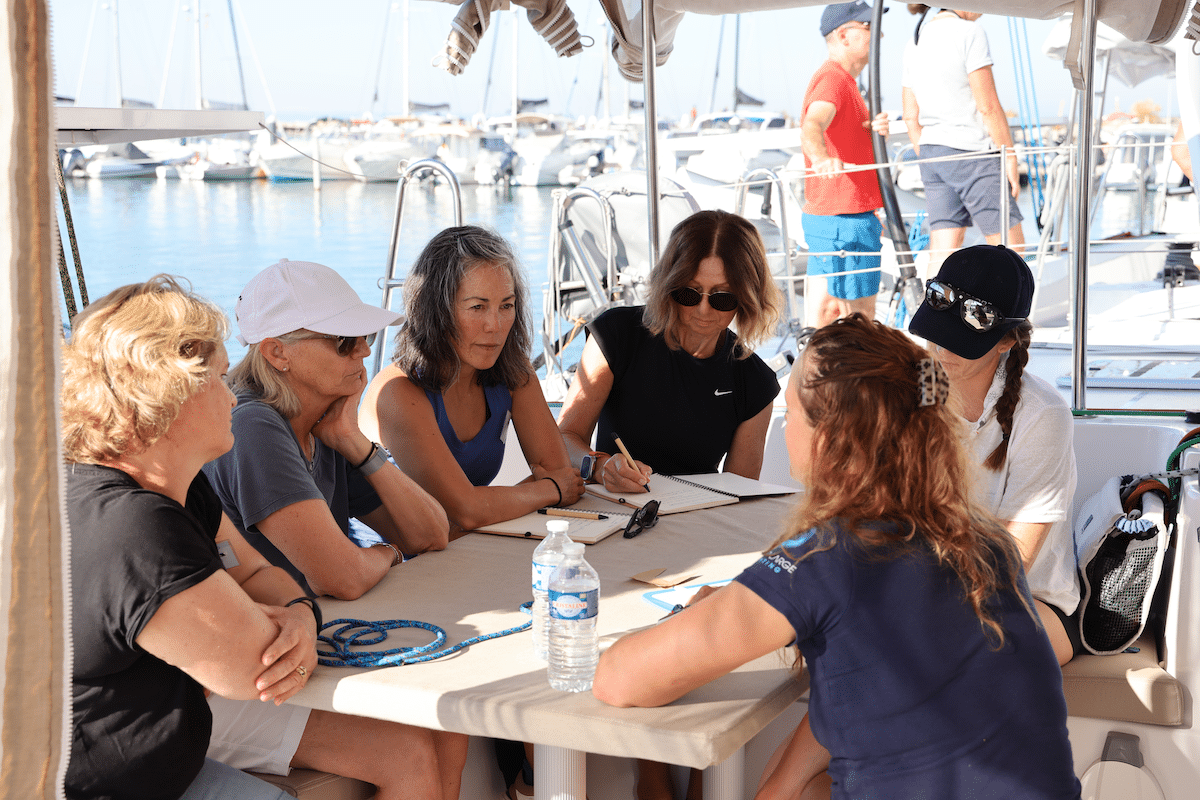
Catamaran daggerboards: how should they be adjusted for optimum sailing?
Daggerboards are best thought of as an ‘underwater sail’ – sometimes called a ‘foil’. Just as a sail above the water needs trimming – so does the sail under the water. But unlike the sail above the water, the daggerboard only has one trim option: how much of it is exposed below the hull.
When sailing upwind the daggerboards provide resistance and lift under the water to balance out the sideways effort force from the sail above the water. In more simple terms, daggerboards help the boat move forward rather than sideways when sailing upwind. Therefore, when sailing upwind, the assumed best practice is to have the daggerboards down. [UP-wind = DOWN-board]
When sailing downwind, the effort force from the sail works almost entirely in the direction you need the boat to go. Therefore, you do not need the resistance under the water from the daggerboard to help with the direction. In fact, it will probably hinder you from sailing deep downwind and slow you down. Therefore, when sailing downwind, the assumed best practice is to have the daggerboards up. [DOWN-wind = UP-board]
Generally, when sailing with wind on the beam – a good ‘go-to’ trim set up is one that is somewhere in the middle of downwind and upwind trim. Therefore, a good starting point for a beam reach would be to lift the daggerboards half-way up.
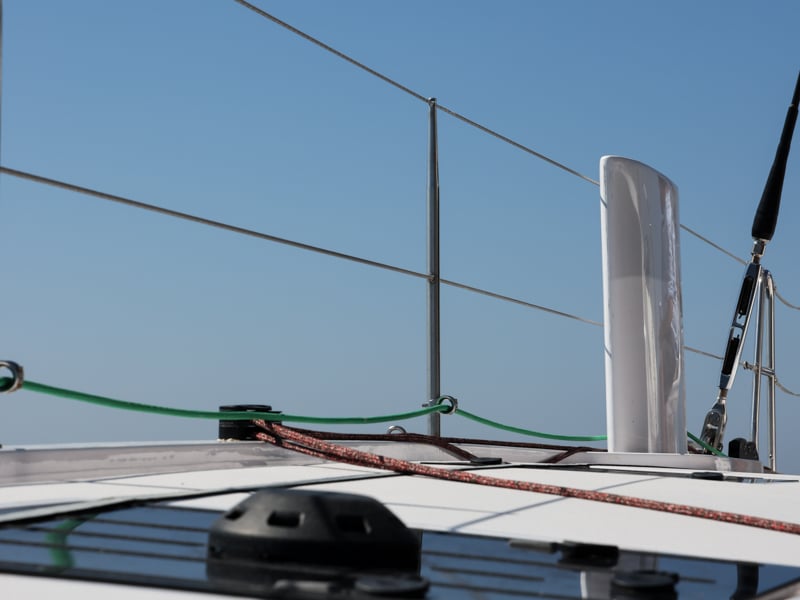
Which catamaran daggerboard for which sailing conditions?
For any competent dinghy sailors who understand daggerboards, this is the most common question as they are typically used to using only one!
An important key principle, is that a daggerboard is only effective when it is submerged in the water. Therefore, if you were sailing the boat purely for performance in a flat sea, you would always need to be trimming at least the leeward one. If the windward hull lifts slightly here and there (which it does fractionally in any substantial wind) then the windward daggerboard is not working efficiently.
Do you drop the windward board? In relation to performance, this depends on how much underwater resistance you need.
In very light winds, the standard practice is to lift the windward daggerboard all the way and only trim the leeward board. When both daggerboards are down, (for simplicity) there is now double the ‘underwater sail’ area. This would likely imbalance how much power there is from the light winds on the sail above the water, and literally ‘drag’ the boat and slow her down.
As the winds increase, there may be a time where you feel you want more underwater resistance, and you could consider lowering the windward board as well. You might find your course over ground improves. Then it was a good decision. If your speed decreases, it might be creating too much drag and you should lift it back up.
If the wind continues to increase further, it is likely you will choose to reef the main. If we return to the concept of the daggerboard being the ‘underwater sail’, if you reef the main, then consider reefing the daggerboard and lifting some up slightly with each reef you put in upwind to keep the boat balanced.
You may be wondering how such a tiny thing as a daggerboard could balance out the enormous sail area of a main sail. The answer here is that water is a much denser fluid than air, and so the daggerboard needs much less area to create the same force than it would do if it were in air.
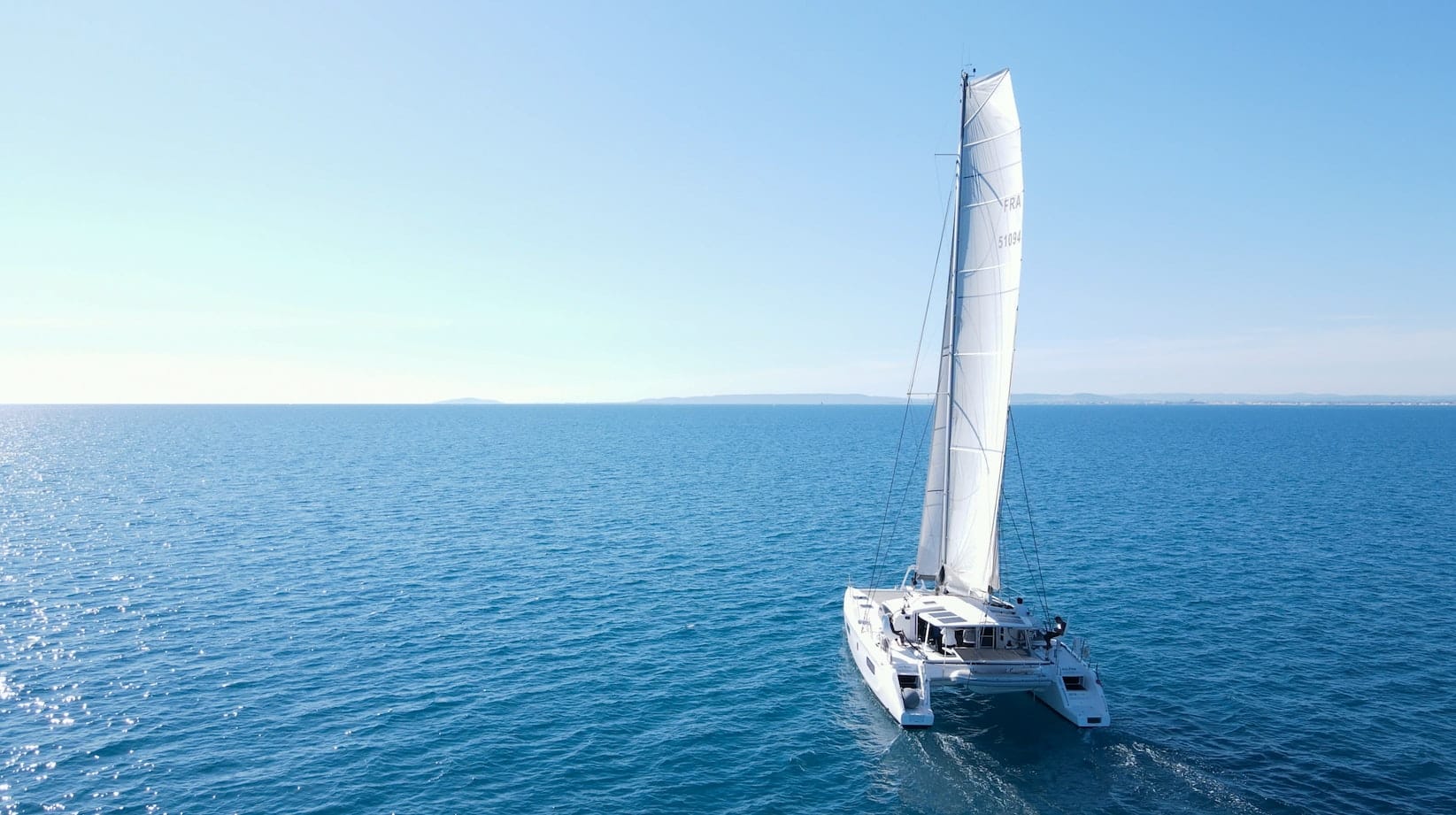
Safety at sea: adjusting daggerboards to avoid risks
This is where things start to get a little confusing.
The leeward daggerboard being down will increase the risk of ‘tripping up’. Therefore, in any significant sea state – or possible impending increase in wind/seastate such as if you are close to a mountainous shore line – where you feel that the hull is, or may, lift a lot, it is in fact safer to lift the leeward daggerboard and only use the windward one. Be aware that you will see a drop in performance as this contradicts the performance best practice of trimming the leeward board and not the windward.
The safest option entirely in very large sea states where the sea is actually tilting the boat significantly from side to side as she rolls down waves is to lift both daggerboards, so you float along waves like a raft.
‘Tripping up’ is a phrase used a lot and in fact sometimes misunderstood. To explain what it means: if there is wind/waves coming from the side of the boat and the windward hull lifts slightly in a wave, or there is a gust and the sail powers the boat forward – the leeward hull can ‘dig in’ to a wave and trip the boat up. The best way to imagine this is imagine getting one of your shoelaces on one of your feet stuck but the rest of your body is still walking. You will fall over. Same with the boat.
A converse argument to lifting the daggerboards up, is that dropping both of them will protect the underside of the boat – from grounding, or from hitting a submerged object. Having both daggerboards partially down can protect the propellor. Having them at ‘deck level’ can protect the rudder. In other words, if you hit something then it will hit the daggerboard before the more fragile underwater equipment.
Another argument against lifting the daggerboards entirely, is that with no daggerboards, your rudder is doing all the ‘resistance-work’. It is hard to believe, but it also acts as a very tiny underwater sail too. There will be a huge load on the rudder with no daggerboard at all and this risk is probably not worth the gain in speed on a long downwind ocean crossing. One way to spot if the rudder is working too hard is just look at your autopilot rudder angle – if it’s maxing out and having to work very hard to keep the boat going straight then you probably have too much sideways slip. It’s a bit like the boat is sailing on an ice rink. In that case, I’d recommend putting both of them down a touch. This will benefit both the ruder and the autopilot (therefore power consumption).
(Read our Safe Sailing article to learn more about safety on board)
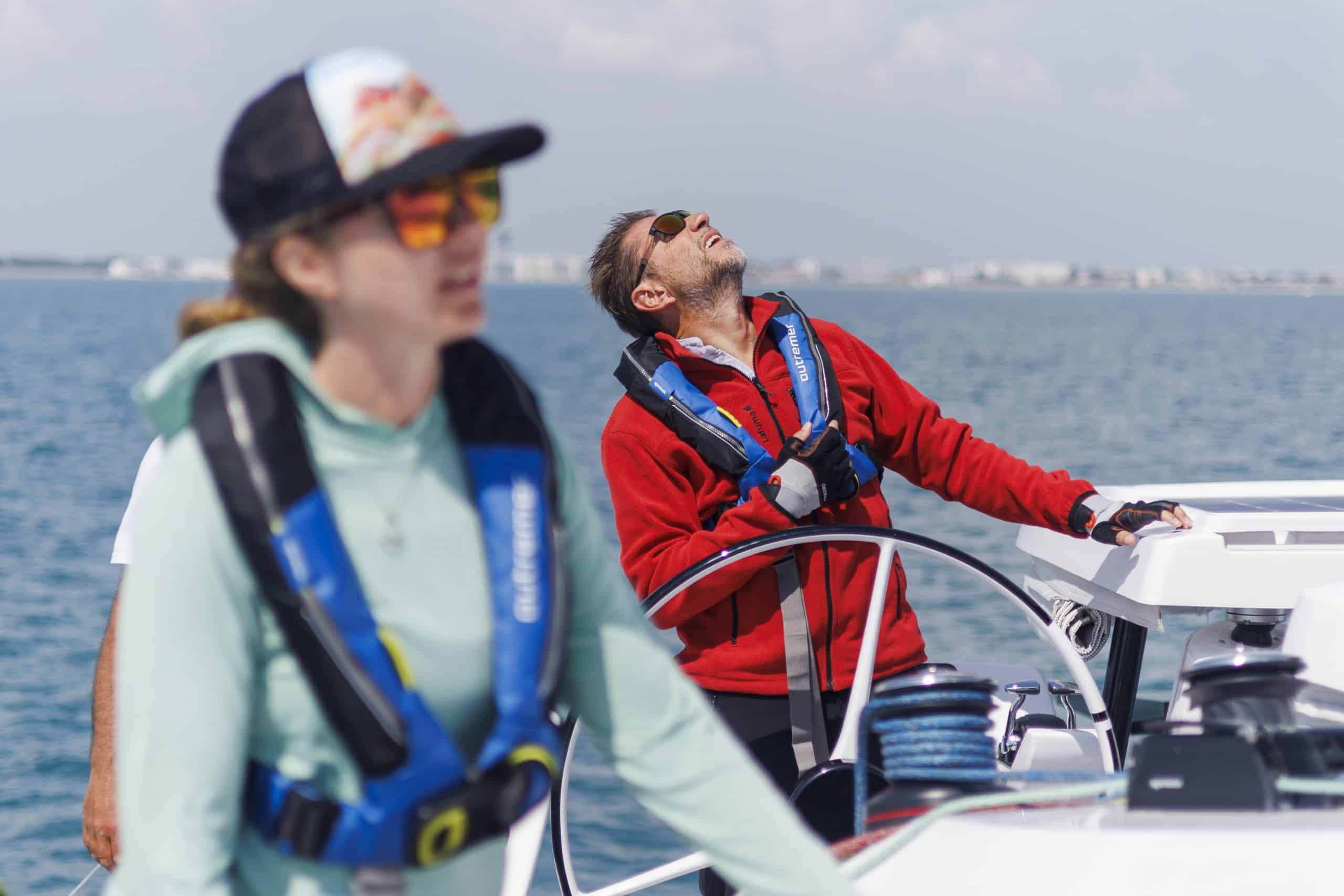
Using daggerboards is a balancing act! Boat weight, weight distribution, sail area, wind strength, sea state, sail trim are all things that effect the decision for how to use the daggerboards: how much daggerboard to use and which one (or both) to use. This is why it’s not an exact ‘one size fits all’ rule and anyone who tells you so is probably oversimplifying it which could lead to a dangerous sitaution. But start using them and see how the boat feels. The beauty of buying an Outremer is that if you keep her lightweight and trimmed well, then she will talk to you and tell you what feels good. Don’t believe me? Try sailing a brand-new Outremer out of the factory before she has anything on – then compare it to one with four peoples’ life belongings on – and you will see what I mean. 😉
Continue navigation
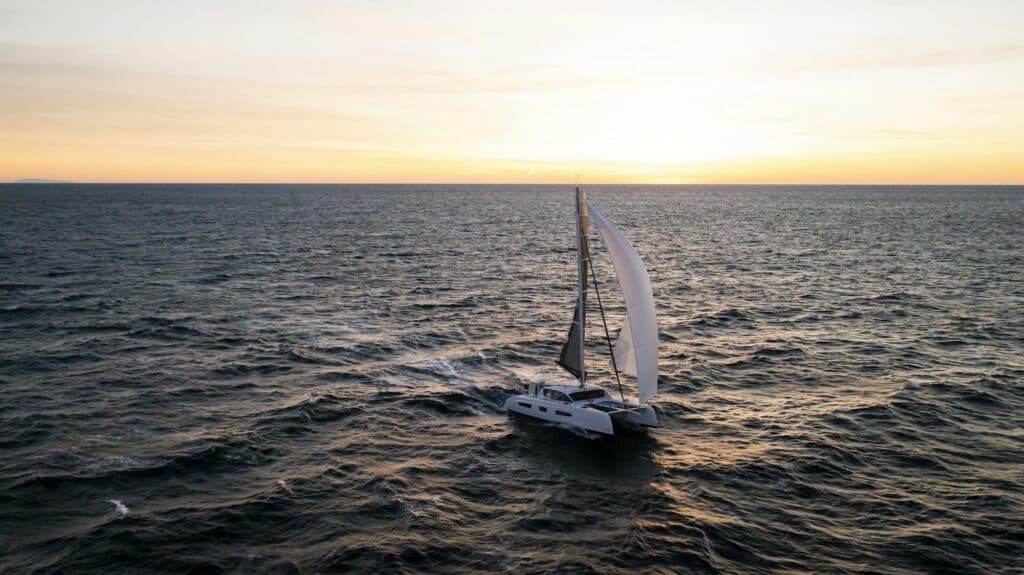
Why sail around the world in a catamaran rather than a monohull?
Sailing around the world is a dream come true: you discover the world to the rhythm of the wind and the stopovers, exploring new destinations every day as you sail. If you’re just starting to read this article, you’re probably nurturing this project. Are you planning to sail around the globe? Then the choice of ship for your next voyage is crucial.

The Importance of Defining Success
In the Autumn of 2023, I ran a ‘Webinars for Women’ mini-series on transatlantic preparations. The first session was titled: “How to approach transatlantic preparation.” As I zoomed out of the nitty gritty of canned food recipes, spare parts inventories, and preventative sail repair and took a broader look at the framework for a successful crossing, I homed in on what I think the first and most important step is: defining your goal.

Sailing in the Bahamas : unforgettable stopovers
The Bahamas Islands are a dream destination to explore under sail! In the heart of the Caribbean Sea, the archipelago offers the chance to enjoy sailing through splendid scenery, pleasant places to stop off and memorable activities. In this article, the Outremer team tells you what they consider to be the essential stages of a catamaran cruise in the Bahamas.

General Design Theory – lightweight – high performance – simple to sail and maintain
Open bridgedeck – better visibility, better looking and great air flow
High Fineness ratio – length to beam ratio close to 12:1 when kept light.
Flared hulls with protective “shoulder” – drier ride and huge interior volume
Retractable daggerboards and electric outboard motors – beachable, higher pointing angles and less drag off the wind. Gunkholers delight – 2′-9” draft
Very simple layout – lightweight Core-Cell cored resin infused interior cabinetry, cherry framed caned panel doors to allow great ventilation in cabinets avoiding mold.
High speeds – Under sail averaging 200+ miles per day. Hydro-generate 1 kW to 2 kW per hour at 9 knots.
Auxiliary power – Twin E-Tech 4.3 kW electric outboard motors, hydraulic trim and tilt, bronze 3 bladed high efficient prop, high torque and thrust, custom extra long shaft, 10,240 Whr at 48 volt Li-ion battery bank, maintenance free system. Easy deck accessibility under port and starboard bench seats. Added safety from having redundant twin motors.
General Design Parameters
Design to be single-handed. Fun to sail and out-perform all current cruising catamarans on the market. Comfortable, safe, easy to sail and affordable.
Build the lightest structural components possible by thermoforming Core-Cell PH core and resin infusing 100% vinyl ester resin in female molds. Finished boat is 2 hull and deck units, capped bridgedeck platform, rig and roof and you are ready to go sailing in an ocean capable, high performance cat. We are offering a very simply equipped package to keep the price as affordable as possible. We offer a host of options you can add yourself in time or we can install at the shop during the initial build. Our goal is to get you out on the water sailing as economically as possible, before you start adding “stuff” you might be able to live more comfortably without. Every piece of equipment you add requires maintenance and time taken away from sailing.
Hull Shapes are designed to maximize the interior volume, minimize the waterline beam and keep spray down and off the deck and windscreen. The nicely radiused chine and “shoulders” we designed provides almost 6 feet at the maximum beam of each hull, yet the waterline maximum beam is only 38” when she is fully loaded to 12,400 lbs. Our chine is over 12 inches above the DWL and will provide very little resistance or interference for our racer owners and huge additional buoyancy for our loaded-up live aboard cruisers in large seas.
Our approach to the rig design is also going to offer our owners a number of choices to fit their skill level and cruising area. Our standard rig will be a Selden fixed fractional rig with furling self-tacking jib and fully batten main similar to our MC 41 setup. Options available will include pole mounted free furling screacher, flat top mainsail, and a number of upgrades to our standard Wrap Drive radial cut Dacron for owner looking for the highest performance. All sails designed by Dave Calvert.
Our solution for economical, lightweight and inexpensive auxiliary power which is easy to access, eliminate drag while sailing and avoid lower leg corrosion will be electric outboard motors. Our design includes twin E-Tech 4.3 kW electric outboards that when sailing will hydro-generate up to 2 kW per hour. These motors are housed in small nacelles located amidships under the bridgedeck. The electric motors have power tilt and fully retract clear of the water when sailing to reduce drag.
Advantages of Thermoforming the Structural Core in NEW MC 38
Thermoforming is a process of heating the Core-Cell coring to a point where the mechanical rigidity in the foam is temporarily broken down to a level which makes it flexible, allowing it to be shaped and “formed”. This temporary flexibility is reversed by the cooling of the foam where full mechanical properties are restored. This method of construction reduces the weight of the structure by removing any excess resin in the typical PVC core with saw-cuts and also allows a tighter and more accurate fit of the core. This leads to weight savings in core bonding and kerf filling during the build process.
There are many reasons why thermoforming is a good idea in composite sandwich components.
- Thermoforming core eliminates the need to have any core cuts or grooves to increase shaping capability, and as a direct result a thermoformed core will not have the additional weight of the resin or adhesive required to fill these grooves. By eliminating resin in the saw cuts, the Maine Cat 38 has superior cosmetics and no “print” through.
- Thermoforming allows a tighter fit tolerance to the skins (more time can be taken to ensure the fit is correct). This allows the core to fit with much less filling compound and adhesive – both of which can add significant weight to a component when fitting poorly shaped core.
- Thermoformed core will demonstrate the exact mechanical properties indicated by the data sheet and product information. The addition of cuts and grooves to the core materials can have large impacts on the mechanical properties which should be accounted for during the design process when specifying core materials in sandwich construction. The end result is we achieve stronger and lighter composite assemblies that are better engineered for a superior finish product.
The major disadvantage of thermoforming is the time requirement. The process of thermoforming core is one that requires considerable care and time, making it difficult to integrate into a production build scenario unless additional tooling and operations are available.
Maine Cat has made this investment in additional tooling and all our thermoforming is performed inside female production molds. Maine Cat is the only production catamaran builder in the world utilizing Core-Cell thermoforming coupled with vinylester resin infusion.
The NEW Maine Cat 38 is stronger, lighter, and a blast to sail.
NEW MC 38 LS-E DESIGN
- Exterior premium ISO-NPG gelcoat
- Composite thermoformed VIC Core Cell SAN closed cell coring
- Resin infused vinyl ester resin with quadraxial E-glass knit fabrics
- Built to ABS and IOS scantlings
- Hull to deck joint bonded with Plexus structural adhesive and thru-bolted
- Hull to deck joint glassed on interior with 1708 biaxial tapes multiple layers
- PVC rub rail with stainless steel insert cap exterior
- Three (3) coats of SeaHawk bottom epoxy barrier system, two (2) coats BioCopTF
- Exterior premium ISO-NPG gelcoat with light gray non-skid two tone
- Composite hardtop roof with two horizontal sliding windows forward sections
- 316L 1” diameter grab rails on hardtop entire perimeter – Total 4 pcs.
- 316 L stainless horses fore and aft linked to 26” double wire lifeline system
- Large flush scuppers aft and amidships cockpit for self-bailing bridgedeck drainage
- Bridgedeck flooring to be non-skid LonMarine S-Wood teak & holly flooring
- Two (2) large self-draining storage lockers in forward beam
- Four (4) 12” and two (2) 10” SST 316 mooring cleats and four (4) chocks at bows
- Total two (2) flush hatches and four (6) portlights, all opening and with screens
- Two (2) large inboard facing companionway hatches with lockable drop boards
- Custom stainless steel stern rail with inboard side rails and composite davits
- Two (2) vinyl coated polyester 3/8” open trampolines forward w/ centerline king plank
- Stainless steel anchor roller, chain gate, Rocna 20 kg, 80’ chain and 120’ 8-plait rode
- Lofrans Project 1000 electric windlass, deck mount, foot switches and helm switch
DAGGERBOARDS AND RUDDERS
- Two (2) high aspect ratio 12 % NACA composite foils, daggerboards fully retract
- Balanced high aspect ratio fixed under-body rudders in Tides Marine bearing tubes
- Center Console mounted wheel steering with 360 degree visibility Edson cable and chain custom designed system with separate autopilot tiller arm at autopilot drive in rudder room aft
SPARS, RIGGING & SAILS
- 49’ Selden anodized aluminum mast fractionally rigged with double spreaders Includes spinnaker and screacher halyards and single line reefs at two points, includes 2 line 3rd reef
- Gull Striker “A”-frame with Selden compression beam forward
- Calvert Warp Drive radial cut Dacron mainsail with stack pack and jib with sun cover
- Self-tacking headsail Furlex furling system, curved track and car with controls
- Block and tackle 4:1 cap shroud tensioners included port and starboard
- Three (3) Harken Radial 46.2 STA two speed self-tailing winches, Lewmar clutches
- One (1) Harken Radial 46.2 STEA electric self-tailing winch at winch pod halyards
- Nine (9) foot mainsail traveler track, car and controls mounted on the aft beam
- Outboard hull mounted chain plates, 316L standing rigging, all running rigging std
E-TECH ELECTRIC OUTBOARDS, BATTERIES , CHARGER AND CONTROLS
- Twin E-Tech 4.3 kW outboard electric drives, hydraulic trim and tilt, hydro-generation charging
- E-Tech twin electric drive engine controls with digital displays
- Two (2) Mastervolt MLI 24/5000 24 V Li-ion batteries in series, 10,000 Whrs at 48 volts
- Victron Quattro 48/5000 inverter/charger for 48 volt Li-ion bank w/galvanic isolator at inlet
- Mastervolt Easyview 5 battery and battery charging monitor display
- Whisper Power M-GV5 Piccolo-12oV / 60 Hz permanent magnetic diesel genset w/ PMG
- Automatic stop and start genset relay included off Victron Color Control GX display
- 12 V/120 V electrical distribution panels, 20 DC circuit breakers & four AC breakers.
- 48 volt to 12 volt DC to DC converter to feed house distribution panel
- Navigational lights all LED including foredeck, anchor, steaming and mast top tricolor
- All interior and bridgedeck 12 volt lighting is LED, total ten (10) fixtures
- Protected 120-volt SmartPlug inlet shore power plug and three (3) 120-volt outlets
- Three (3) 12-volt receptacles and total three (3) ventilation fans, one each berth
- Solar array six (6) 170-Watt flexible 22 % efficient panels w/ Smart MPPT charge controller
- E-Tech electric outboards will hydro-generate electrical power at 1 kW to 2 kW per hour assuming the MC 38 is on a sailing speed of 9 knots. Top speed 16.8 knots to date.
ELECTRONICS, VHF AND PLOTTER
- Garmin GPS MAP 7612 chartplotter preloaded with BlueChart g2 coastal maps
- Two (2) Garmin GMI 20 displays with gWind and depth transducers, all NEMA 2000 network
- Garmin VHF 315 radio w/GHS 11 ram mic, active speaker, masthead antenna
- Garmin GHP autopilot with Jefa 150 KgM direct drive unit type 1 planetary gearbox
STOVE AND REFRIGERATION
- 10 lb. Aluminum propane tank with leak test gauge, regulator and electric solenoid
- Three (3) burner Force 10 model 43334 propane stovetop with pot holder kit
- Custom 5 cu.ft. Upright freezer/refrigerator with water cooled, 24 volt DC powered
- Two (2) polyethylene fresh water tanks total 81 gallons
- AirHead composting toilet eliminates typical holding tank odors and thru-hulls
- Two (2) electric automatic bilge pumps with float switches and fused switch panels
- Whale Gulper gray water pump for shower sump pan in head
- Hot and cold pressure water at head sink, shower, galley sink and stern shower
- Precision Temp ShowerMate M-550 propane fired hot water heater
- Second 10 # Alum. propane tank w/ leak test gauge, regulator and electric solenoid
- Salt water wash down thru-hull, pump, coil hose and nozzle in forward beam
INTERIOR ACCOMODATIONS AND FINISH
- Headroom minimum 6’-3” to maximum of 6’-6”, painted headliners
- Berths for up to five, two queen berths aft in each hull, 60” by 6’-8”
- Large single in port hull forward is 50” wide at the head by 6’-8” long
- Cushions below decks port forward and master are 5” thick medium-density foam
- Port aft queen easily converts into a cozy dinette that seats 4 very comfortably
- Port aft queen convertible dinette/berth cushions are 4″ thick ultra-foam
- All interior bulkheads are resin infused Core-Cell foam cored painted finish.
- Lower cabinets and lockers all resin infused Core-Cell cored composites
- Solid surface Corian counter tops on all horizontal surfaces 1” thick at edge
- Upper cabinets cherry face frames & canned cherry framed cabinet doors per plan
- Large (16’ long) tinted acrylic fixed portlights outboard each hull in cabin topsides
- Two (2) large sealed air chambers forward each hull accessible from interior cabins
- Fiberglass head starboard forward with sink, shower sump pump, marine head, storage cabinet and separate shower area with curtain
USCG safety package including: 5 PFD’s, horn, 3 fire extinguishers, flare kit, four dock lines, Life Sling, mooring/anchoring bridle and 3 fenders.
Thank you for the opportunity to present this information on the beautiful E-Tech electric 4.3 kW outboard drive Maine Cat 38 LS-E performance family cruising catamaran. Sail and power quietly.
PROTECT OUR OCEAN’S HEALTH
Last updated July 1, 2019 and specifications subject to change.
NEW MC 38 LS-E ELECTRIC POWERED PRICING
MC 38 LS-E ELECTRIC OUTBOARD DRIVE POWER Please call for pricing
Based on specifications dated June 1, 2019.
- Maine Cat 38 LS-E Performance Cruiser Specifications dated 1/1/2019
- Two (2) Mastervolt MLI 24/5000 24 V Li-ion batteries in series 10,000 Whrs at 48 volts
- Lofrans Project 1000 electric windlass, foot switches & remote helm switch
- Thermoformed VIC Core-Cell vinylester resin infused composite hulls/deck
- Selden 49 foot custom mast, single line reefing boom and gull striker/beam
- Calvert Tri-radial Drive Dacron mainsail with stack pack and jib with sun cover
- Self-tacking jib with furler, curved track, clutches and Harken deck hardware
- Composite hardtop with large fixed and opening windows forward and sides
- Fully retractable high aspect twin daggerboards, fixed underbody rudders
- Solar array six (6) 170-Watt flexible 25 % efficient panels w/ Smart MPPT charge controller
- 48 volt to 12 volt DC to DC converter to feed house 12 volt distribution panel
- All interior, bridgedeck and navigation lighting to be LED fixtures
- Garmin NEMA 2000 system w/ depth, gWind, and fluxgate compass
- Garmin GPSMAP 7612 touch screen chart plotter with BlueChart loaded
- Garmin GHP 12 autopilot w/feedback, w/ Jefa mechanical drive below deck
- Force 10 three burner model 43334 propane cooktop with fiddles
- Custom 5 cu.ft. freezer/refrigerator water cooled, remote compressor 24-V powered
- Precision Temp new M 550-EC propane fired stainless steel instant hot water heater
- New port aft convertible dinette below decks, seats four or convert to queen berth
- Double wire 26-inch high lifelines, stern rail, horses and four gates
Sail Magazine’s Adam Cort reviews the ME Cat 38
Share ME Cat 38
ME Cat 38 News

New MC 38 LS-E brochure now available
Send us an email or call 207-529-6500 and we would be happy to send you the full brochure and additional information on this exciting new technology that provides a completely new way to enjoy a simpler and safer sailing experience.

MC 38 LS-E Our boat makes it’s own fuel – Why Stop?
Very successful trip in November to Amsterdam and METS trade show, the world’s largest marine trade show. Lynn and I spent most of our time at the show in hall 7 at the E-nnovation Lab showcasing the newest electric and hybrid marine propulsion systems. In the main hall (photo above)… Read the full article

MC 38 Winner Best Boats 2018
Maine Cat 38 Winner 2018 Best Boats award from Sail Magazine Maine Cat’s new MC 38 high performance cruising catamaran was awarded 2018 Best Boats for Cruising Multihull under 40′ by a group of Sail Magazine judges following the recent Annapolis Sailboat Show. The judges made special note of our… Read the full article
If you’re a sailor, if you like multi-hulls and if you like boats that are truly meant to sail, you owe it to yourself to take a look at the Maine Cat 38. Adam Cort, SAIL MAGAZINE
Update your browser to view this website correctly. Update my browser now
- 0 No item in your cart
- SUBSCRIPTION
- Classified Ads
- Technical Specifications
- Destinations
- Address book

- All the magazines
HH60 - A high-performance catamaran with deep daggerboards and an extra-wide cockpit

Article published on 05/11/2021
By Emmanuel van Deth
published in n°SP17 dec. / jan.
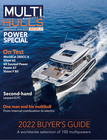
This latest HH project from Morrelli & Melvin retains the same silhouette of the other models in the range while affirming its ambitions in terms of performance: displacement remains modest and is associated with a powerful rig - this culminates at 94½ feet (28.78 meters) above the water...
Create a notification for "Catamaran"
We will keep you posted on new articles on this subject.
Upwind, the daggerboards can push the draft down to just over 13 feet (4.00 m): we suspect that upwind course-keeping will be exceptional. The deck layout has two particularities: firstly, a cockpit that is as wide as it is streamlined, and secondly, twin helm and maneuvering stations at mid-height. The protection of the area is ensured by three small independent biminis or one larger, more enveloping one.
Builder: HH Catamarans Length: 58’11” (17.95 m) Beam: 26’8” (8.12 m) Light displacement: 34,175 lbs (15.5 t) Draft: 4’3”/13’1” (1.3/4 m) Mainsail: 1,509 sq ft (140.15 m²) Solent: 750 sq ft (69.63 m²) Engines: 2 x 57 HP
www.hhcatamarans.com
Tags :
- HH 60 ,
- HH Catamarans
Did you like this article ?
Share this article
Most-read articles in the same category.
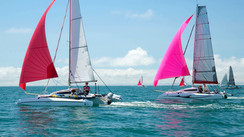
Astus Boats Club - Ask for the 2024 program!
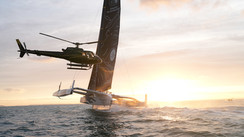
Arkea Ultim Challenge - Brest: Charles Caudrelier's coronation aboard his Maxi Edmond de Rothschild
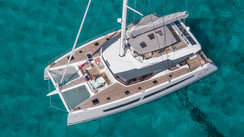
Alegria 67 - A Jacuzzi at La Grande-Motte?
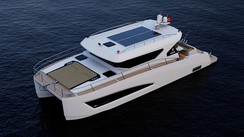
Discovery 40 - A sedan built in Turkey
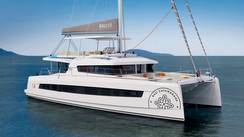
Bali 5.8 - The new flagship of the range
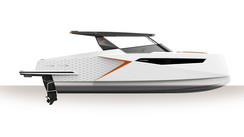
Dracan 42 - Another manufacturer on the powercat market!
What readers think.
Post a comment
No comments to show.
Follow us on
Vous avez ajouté " " à vos favoris., vous avez supprimé " " de vos favoris., in order to add this article to your favorites, please sign in..
production Strider 24
plywood Romany 34
lightweight 14ft Zeta mainhull
Strike 15 trimaran at speed
28ft Skoota in British Columbia
10ft 2 sheet ply Duo dinghy
24ft Strider sailing fast
36ft Mirage open deck catamaran
- All Our Designs
- For new visitors
- About Richard Woods
- Useful Articles
- Testimonials
- Plan Updates
- Links to Owners and Suppliers
- Consultancy Service
- Boats for Sale
- Blog and Facebook Posts
- Our Cruising Blog (updated Jan 26th 2020)
- Download Eclipse logbook (300 page pdf)
- Download Newsletters 1992-2002 (pdf)
- Download Year Reviews 2002-14 (pdf)
- Download FAQs (pdf)
- Download Boat Tests (pdf)
Keels or Daggerboards, the pros and cons
When writing about foils (ie boards, keels and rudders) it is easy to baffle people by talking about lift to drag ratios, NACA sections, end plates, twist, stall, Karman vortices and all the rest. So I won't - it's probably best to leave all that to designers and hydrodynamacists Instead I'll try to help those who want to know the basics; like should they have keels or boards on their multihull?
I'm not just a multihull designer; I'm also a (home) boatbuilder and owner. Currently I own two catamarans, one with daggerboards and one with keels. Over the last 30 years I have owned five cruising catamarans with keels, nine with daggerboards and one with one centerboard. Furthermore, I am one of the few designers who has fitted LAR keels and boards to the same hull (on Strider, Sagitta and Banshee) and then sailed them against each other.
As with everything to do with yacht design, leeway prevention is a complex subject. And it is not helped by the fact that boats are not just for sailing. You load them down and treat them as a floating cottage when you live aboard them. You motor them, you dry them out (either when the tide goes out or when stored ashore in a boatyard). And you have to pay for it all.
===========================
First a bit of simple theory
The main factor determining the efficiency of a foil is its "Aspect Ratio" (AR) or the ratio of it's depth to width. I think we all know that a high aspect ratio foil is more "efficient" than one with a low aspect ratio. A 3:1 AR is generally considered ideal for rigs but is usually too high for foils. In fact a 1:1 AR is OK for keels, although 2:1 or a bit more is better. In other words, a 1.5m deep daggerboard on a 10m boat will be about 750mm fore/aft (or more properly called it's "chord"). And it will be about 75mm thick, as the thickness of a foil should be about 8-10% of the chord.
Despite the fact that high AR foils are more efficient, there are a couple of reasons for limiting AR. As the AR increases the chord decreases and so the foil becomes thinner and clearly it is then also weaker. Unfortunately the foil loads have gone up (because the deeper the foil the further the Centre of Lateral Resistance (CLR) is from the bottom of the hull, so the lever has lengthened). So long, narrow foils are more prone to damage (one reason all those monohull keels have snapped off - a J800 lost one just recently).
In addition, the higher the AR the easier it is to stall the foil. When a foil stalls it stops "working", this is most obvious after tacking in a sloppy sea and you find that the boat won't sail properly for a couple of boat lengths. That is because the foil has stalled. In other words, you have to be sailing in flat water and be a very attentive helmsman to avoid stalling a high AR foil.
The lower the AR the bigger the foils area has to be to compensate for the reduced efficiency, however a lower AR is more tolerant of shape, surface roughness and angle of attack (which basically makes it easier to sail)
So how big should a foil be? Roughly 4% of the sail area is a good starting point. Some designers use very small boards. That may be OK in theory, which says that you sail in flat water at maximum speed, but in practice I find you need a bigger board to cope with waves and slow sailing, never mind tacking in a lumpy sea.
Whilst on the dangers of too much theory. Many race boats use sophisticated shapes and low drag sections. Don't use them unless, like top racing boats, you also dry sail your boat. Only the simplest shapes work with a rough surface (even new, clean antifouling is considered rough), these fancy shapes need a smooth, ie a mirror finish, to be of benefit.
I definitely don't like asymmetric foils. True they may give a bit more lift but only one can be used at a time, the other HAS to be raised. So you are carrying around the extra weight of a second board and box plus wasting time adjusting boards after each tack which all makes it not worth the very small efficiency gain.
Many people, especially cruisers, don't mind compromising on performance if it means an easier life, more load carrying and greater protection for the rudders and propellers. And that is why Low Aspect Ratio (LAR) keels are so popular. In much the same way as monohull sailors buy a long keel boat rather than one with a fin keel.
Unfortunately, using LAR keels results in a slower boat and more pitching. That is because to optimize speed you need a hull with buoyancy in the ends, not in the middle (technically you need a high Prismatic Coefficient - Cp). Clearly adding a LAR keel adds buoyancy in exactly the wrong place. Furthermore the midships buoyancy makes the boat pitch more as the hull is more "diamond-like". Having said that the buoyancy in the keel adds to total displacement, so you can carry more gear. And you can use the keel as a water tank/shower sump or even somewhere to fit an engine.
As I have just said, a lower AR means having a bigger foil and so clearly a LAR keel has to have much more area than a daggerboard. Thus the wetted surface area (WSA) is significantly increased, especially when sailing offwind compared to a daggerboarded boat with raised boards. And WSA is the prime source of drag at low speeds. So most designers draw a compromise keel which is smaller than strictly needed to balance the sail forces. But these forces must still balance and this can only be done by having a wider sheeting angle. Which in turn means a LAR boat cannot point as high as one with daggerboards.
So all in all boats with LAR keels are slower on all points of sail and in all conditions when compared to a daggerboarded boat. Say 5deg more leeway and 2deg less pointing. Remember it is hard to tell ones real leeway from looking back at the wake as in a seaway the top 2-3ft of water is blown sideways by the wind. So unless the keel is in deep still water you don't notice that you are drifting sideways until you look at the gps.
Further Design Considerations
Boards can be daggerboards (ie adjusted vertically) or centerboards (ie adjusted by rotating). Even though centre boards sometimes fit better into the accommodation layout and can pivot aft without damage when hitting the ground, daggerboards have proven far more popular. Probably because the centerboard pivot bolt often leaks, while it is very difficult to stop the water surging in the case with the board down, and it is easier for "Stuff" to get stuck in the gap between slot and board, thus jamming the board. A centerboard box/centerboard is probably heavier than using daggerboards. And finally it is harder to remove a centerboard for painting/maintenance.
Angled boards actually take up little interior room and can always be incorporated into accommodation dividers - the nav table bulkhead on a Banshee, the hanging locker on a Sagitta, against the hull side on a Merlin for example. More important is that they then don't bang around in a sloppy sea. Providing the board is angled at under 15deg to the vertical I haven't found any disadvantage in using angled boards. Nor have I noticed any difference between boards placed on the inside of the hull and those on the outside. Certainly there is no advantage in having vertical boards fitted on the hull centerline.
Don't use central boards though the bridgedeck. They simply don't work well. The Prout brothers discovered that in 1953 when they fitted a central board on the prototype Shearwater. By 1954 they had fitted boards in the hulls. The Stiletto catamaran started with a central daggerboard but owners quickly found that converting to ones in the hulls improved performance significantly.
The bottom of a LAR keel should be horizontal, otherwise you'll dry out at angle (OK I know that in many areas boats never dry out, but you want your boat level when in a boatyard) Even worse is a keel that is too short as then the boat can fall forward or aft when people move to bow/stern. Clearly dangerous and damaging to crew and boat.
Building Considerations
Boards are heavy, and more expensive than LAR keels, there's nothing one can do about that. To save weight you can make a short board, so that when down the top of the board is below deck level. Daggerboards can be profiled over their full length. But in that case you need to make the board first, and then make the box round the board. So you need to make expensive boards early on during the build.
The alternative is to profile only the below water portion, leaving the rest rectangular. This means the box is also rectangular, so the board can be made after the box. True, there is some extra turbulence when the board is half raised, but you can negate much of that by fitting a profiled cover plate on the outer side. Also I've found that there are less chance of leaks with a rectangular box and more important, weed, twigs etc are less likely to get between board and case and jam the board.
Many people suggest building a "crash box" to absorb any grounding shock. But be warned! I made one once years ago as an experiment on a dinghy. I ran aground and the board moved back into the crash box, exactly as planned. But then jammed - not part of the plan!! I had to capsize to free the board so I could raise it. Hardly practical on a cruising catamaran!
I haven't used a crash box since, relying instead on a very heavy laminate at the back of the box. My reasoning is that the tapered trailing edge of a board is far weaker than the box and so will always fail first. I proved that when hitting an unmarked reef off Nicaragua and we lost about 300mm x 100 mm of board, yet the box itself was undamaged.
Boards are generally made in timber or foam/glass. I prefer plywood over laminated timber as it is easier to profile. Foam boards are attractive in theory, but it is very hard to stop them warping and getting the correct shape without making a mould first is almost impossible. If you do make a mould you have to join the two halves, and remember boards don't just bend they also twist.
If you can, fit LAR keels as late as possible, this keeps the boat nearer the ground during building and saves a lot of ladder climbing.
What about in use?
Unlike boards, LAR keels are very much fit and forget. So there isn't much to say about keels, except to make sure you have a good sacrificial beaching strip and keep it maintained.
It is sensible to lift the lee daggerboard when reaching, as I have found that most breakages are of the lee board as it gets very loaded at speed. However lifting both boards in a big cross sea is not a good idea as that loads the rudders and that, apart from anything else, makes it heavier to steer, so have both boards half down.
Not being able to lift the lee board for half the time is one reason why I don't like using only one board in one hull. Doing so also means the board is much bigger so there are more local loads and of course it is harder to adjust. And it doesn't seem right to have the CLR so far offline. However if you do fit one board don't fit it in the galley hull as that is always heavier than the other hull.
Lifting the lee board to allow the boat to slip sideways is commonly thought a good idea. I'm not convinced. Tank test work has shown that having a deep lee hull actually helps prevent capsizing. That is because the windward hull lifts to a breaking sea, the sea goes under the bridgedeck and hits the lee hull. Because it is deep it is pushed sideways, which dissipates any overturning energy.
People often think you need a long keel (monohull or multihull) to steer straight "hands off". That simply isn't true. Good directional stability depends on the hull balance. A properly designed daggerboarded boat will sail as straight as a LAR keel one, and have the additional benefit of being quicker to tack and maneuver when necessary.
Finally, if you run aground, you can lift the boards to get off, but remain stuck with keels.
If you don't ever expect to race then keels are OK
If you think crosscut Dacron sails are good enough then keels are OK
If you trail your boat regularly fit dagger boards
If you have wheel steering and inboard engines and expect to dry out often fit keels
If you want the best performance then fit dagger boards, but be prepared to use them

- About Aeroyacht
- Aeroyacht Design
- Aeroyacht TV
- Mission Statement
- Aeroyacht Racing
- Favorite Links
- Customer Testimonials
- Office Location
- BUY A MULTIHULL
- Specifications
- Photo Gallery
- Try Before You Buy
- Yacht Ownership and Demo Sails
- BUY A POWER CATAMARAN
- Yacht Business Ownership FAQ
- MULTIHULLS FOR SALE
- Aeroyacht Superyacht Catamarans
- Global Multihull Search
- Buy A Multihull
- Sell a Multihull
- Multihull News
- Publications & Articles
- Commissioning & Delivery Services
Multihull Keels and Daggerboards

Fountaine Pajot BELIZE 43 resting on her keels, showing good bridge deck height
Uncovering the compromises of both underwater appendages and analyzing their disadvantages and merits.
Man has learned much from nature, and sailboats and their underwater appendages are one of the areas that we have applied what works and what doesn’t. As we all know, boats – as most things in life- are compromises and often we are prepared to make concessions in one area in order to gain an advantage in another. Not only should this brief discussion illustrate the basic virtues and drawbacks of daggerboards and mini keels on multihulls, but also point out their active and passive safety aspects.
Most multihulls in todays marketplace come in two varieties. By far the vast majority of the production cruising catamarans (about 90%) are keelboats and have low aspect ratio, unballasted keels. These well known French, Australian or S.African boat manufacturers market their boats for private ownership and the charter industry and make a great product. Without sounding too general, these boats have very spacious interiors and are perfectly adaptable for live aboard families or the charter trade. This multi million dollar charter industry, has an obvious influence on the requirements and design of their charter fleet, which further has a trickle down effect to other builders who also market their cats for private ownership. Design parameters for these charter cats are often centered around 2 week multiple family vacations in the steady Trade Winds and day sails between closely spaced islands of the Caribbean. The features of these keel catamarans obviously put less demand on pure sailing performance or extreme upwind sailing characteristics, but rather try to please by offering solid construction, live aboard comfort and simple and reliable handling characteristics.
The other type of multihull is the catamaran with articulating daggerboards or centerboards. Centerboard and daggerboard multihulls both share the same basic concept, except their deployment and storage relies on different principles. The daggerboard lives in a scabbard, or daggerboard trunk. It moves up and down, vs. a pivoting centerboard, which is raised and lowered around a massive pin. High aspect ratio daggerboards are by far the most efficient foils. They have none of the problems associated with centerboards, which when fully lowered are only braced by a small area on top. When going upwind in a hurry, loads on the trunk act as a giant lever, which constantly work to spread the trunk apart. This is the reason why it is recommended to operate foils as pairs in heavier conditions to divide the loads. Also the large area of the remaining centerboard slot creates a lot of unwanted turbulence making them unpopular for performance minded sailors. Lastly declining popularity of the centerboarders can also be lead back to the often large intrusion on the interior space the trunks create. Although the Gemini catamaran is a good example of a very popular and well thought out production catamaran, there are few other mass produced centerboarders around. It should be noted that one great advantage centerboards have vs. any other underbody configuration is that they theoretically retract when colliding with an object. In spite of this, most offshore or performance orientated sailors clearly favor daggerboards or low aspect ration keels.

Illustration A
Daggerboard catamarans have several advantages over their keel counterparts, some of which are well known and others that are more subtle and sometimes only recognized by people who have used them. Active safety aspects are advantages created by speed and the ability to retract underwater appendages.
I am a firm believer of “faster” rather than “slower” on ocean going performance multihulls. Many people might say, going fast is only for racers. But lets think about this. The ability to reduce exposure time through speed is invaluable for cruisers. If say on a transatlantic passage you can shave off 5 days you have already increased your safety factor, in some cases, by 25%. Not being a “sitting duck” is a nice thing indeed. By being able to have the choice, bad weather can be avoided, which can sometimes lead to a negative spiral of incidences. In general, especially on long passages, a daggerboard cat will have the edge on speed over her keel counterpart.
Lets face it, we are all in it for the fun of sailing as famed designer Francis L. Herrshoff said: “The fun of sailing is directly proportional to the speed of sailing”. Maybe this is the reason he designed Amaryllis, his revolutionary catamaran, which was later banned from racing. Generally speaking daggerboard catamarans will always be slightly faster than their keel equivalents. The speed advantage of most daggerboard catamarans vs. keel catamarans though is often exaggerated. On a typical day sail a well trimmed and tuned keel cat will only be slightly slower than a daggerboard cat.
Multihulls lack the feeling of being in the “groove”, which monohull sailors enjoy. Effortless high average speeds, acceleration and sustained high velocity surfs is something fast multihulls compensate with. It should be noted that anything (even a barn door) surfs in the right conditions. Even keel catamarans can surf at speeds up to 30 knots down large seas.
Upwind Advantages: Depending on sea state going upwind, daggerboard catamarans vs. their keel relatives will point up to 5 degrees higher and also experience 2-5 degrees less leeway, which isn’t much one would think. But in an uncomfortable 100 mile beat this ads up to being more than 17 miles closer to your destination! (Illustration B).

Illustration B
sin A=a/c (sin A) c =a (0.1736) * 100 = a a = 17.36 miles
Lets take a 45’ catamaran: the lift (to windward) generated by a daggerboard is almost twice that of a low aspect ratio keel and the drag with the board all the way down would be almost 20% less. The most recent generation cats with large beams and stately bridge deck houses benefit especially from high lift foils, since the windage of their projected area can ad up quickly. The same cats with keels usually suffer from excessive leeway and sideslip. Keel cat’s however, especially in a calm sea state, lessen this disadvantage as boat speed and flow over their keels increases.
Reaching and Running Deep: When running deep in fresh conditions the fixed could act as a brake, that one cannot disengage. Since they cannot be retracted, their volume and resistance slows the boat’s progress and in combination with the forward pressure of the sails forces the bows down. This is especially the case with catamarans that have long bridgedecks, heavy extremities and low volume- fine bows. The bigger the friction in the water, the bigger the pressure on the mast and the more the boat is burdened. Another neat trick is lifting the daggerboards, one can actually increase apparent wind by pointing up and induce leeway, crabbing faster to ones destination.
Tacking and Helm Feedback: Cruising catamarans are often mistaken to tack slowly and behave sluggishly to movements of the helm. This is certainly true for some heavy keel catamarans and much less so for ones equipped with boards. In complex seas, some of the heavier keel cat’s only option for a safe tack is back winding the jib. Monohulls with only one fin will always tack quicker than multihulls, just as foil equipped catamarans will be more responsive than keel multihulls. Modern hydraulic steering systems are easy to build and with most forward helm stations behind the main coachroof, pose sometimes the only alternative for the builder. Mechanical steering and daggerboards will give the ultimate feedback and fun at the helm…if one is driving at all, since usually the autopilot is engaged for longer legs.

Inclined foils on the Aeroyacht H42 performance catamaran built by Edel
Another advantage of daggerboards is the better maneuverability under one engine. If you loose one engine and retract the board on the hull which has no engine power, but leave the powered hull’s foil down, the boat will turn easier. Because of the retracted foil on the un-powered side there will be much less drag induced turning moment, the boat will be more balanced and the other sides deployed board will provide sufficient bite for “survival” steerage. Especially in high crosswind situations a catamaran with both boards down is much easier to maneuver than one with shallower keels. Usually harbor maneuvers under power are low speed operations, and this is where the high lift capacity of twin boards excel yet again and facilitate handling and precision steerage. Daggerboard cats also can motor a bit faster, since by retracting the foils they have less resistance.

Keel and daggerboard cats usually have less draft than keel monohulls, opening access to shallow anchorages. An advantage daggerboards have, are their gauging characteristics when entering shallow harbors or unknown territory. By lowering them, one actually creates a “safety depth”. When they touch bottom one still has the possibility of raising them, performing a U-turn and getting into deeper water. With fixed- non retractable keels, especially with a monohull, groundings or unplanned bottom encounters could end tragic. At least a monhull can attempt in heeling the boat to reduce draft and re float. This obviously is not an option on a keel cat. If you get stuck in the mud you are dedicated to await the next high tide to get you off. Crashing into a coral reef could be a different story altogether and only a haul out can asses and repair damage. Depending on their design, boards could be rotated or flipped, and even repaired underway. In general daggerboard cats also have less draft than keel multihulls allowing access to even more harbors and anchorages. They can be beached high up for repairs or inspections, increasing the window of exposure time between tides. I know, I once performed a 5 hour long emergency repair on our 43’ catamaran this way, saving 1000’s in yard bills and days of headaches.
It should be notes that keel catamarans however, can be beached just as easy as daggerboard cats. They can be left sitting, high and dry, completely safe on their keels, without having to worry about damaging the hulls or getting debris or sea life stuck into the vulnerable daggerboard trunks.
Bruno Nicoletti is an old friend and one of the most low key-expert sailors I know. He has logged more than 130,000 miles (geriatric miles as he calls them) on his 44’ daggerboard catamaran.. At a recent meeting with him in France we talked about his experiences of his record, double handed – one stop- Southern Ocean circumnavigation at age 63. The French Press compares Bruno to sailing legend Vito Dumas and has published his accounts in an article called: “The Impossible Route”. He explained, that in the Southern Ocean, in the most convoluted conditions he would simply raise both boards, lock the helm to windward and lay a-hull with no sails. “Brumas Patagonia” would safely slide down the steep faces of waves and minimally drift to leeward at about 1 mile per hour while he was either resting or reading. The water spoil of his side wards drift would help keep the edge off cresting waves and often prevent them from breaking (Illustration D) While it was blowing 70 knots and higher he felt very safe and in fact the world around him turned peaceful and quiet. His confidence in this system is impressive: I am currently helping him with sea trials on his new 47 footer for a yet another go at a High Latitude – geriatric- circumnavigation. This time he is planning to take his 78 year old brother and do it non stop !

Illustration D
It is not only in the Southern Ocean that one encounters steep, breaking waves. Major capes or the Gulf Stream are notorious for rough conditions where the ability to navigate safely becomes imperative. In these environments any proven and strongly built daggerboard cat would have a slight advantage by lifting her boards, although a well designed keel catamaran could get through unscathed. In extreme weather, and I am talking beyond Force 10, it is very important to enable a catamaran to side-slip rather than encouraging the possibility to trip, and maybe flip. A catamarans behavior in towering side waves is decisive and the possibility to lift underwater appendages is essential, especially if one has lost the ability to steer. The disadvantage of a keel catamaran in huge beam seas is more psychological than real, as these types of vessels typically also slip sideways. In survival conditions or emergencies, the use of parachute anchors, which force the boat into a certain attitude is often thought to be the only answer for most boats. In my mind this tactic is questionable since it puts enormous strains on the boat, is accident prone and renders one helpless when the odd rogue wave from a different direction smacks into the boat. It is better to manage survival conditions, by controlling and slowing the vessel with the use of drogues.
We have learned a great deal from aerospace industry and the trickle down effect to monohull keels. Multihull designers and builders greatly profit from the advanced research, that has been done in the field of NACA sections (National Advisory Committee for Aeronautics) and foil performance. Keels and daggerboards come in a variety of aspect ratios but most are based on low speed foils, which drag/lift characteristics have been optimized. To increase lift even further, some performance catamarans even utilize asymmetrical shaped daggerboards, shaped flat on the outside (leeward) and cambered on the (windward) inside. As they can only be used one at a time asymmetrical boards are somewhat limited in their adaptation for cruisers. (Illustration E)

Illustration E
Since multihulls do not heel, their underwater appendages are more effective in retaining positive flow than their monohull relatives.(this is also the reason why autopilots burn out less often and can be used in heavier conditions on catamarans) As the monohull heels, not only is the upper part partly blanketed by the underbody of the vessel but also flow is lost as the water slips past the angled keel to leeward. (Illustration F) This was especially prevalent on the early IOR monos, which had extremely beamy and shallow bilges and high prismatic coefficient center sections. To compensate for this loss of heel induced flow, monhulls need deep draft keels to make good progress to windward. The keel or daggerboard catamaran on the other hand can more efficiently create lift for the same keel plan view area, not only because it has two vs. one keel, but also through its minimal heel is able to keep its underwater appendages perpendicular in the water.

Illustration F
Usually catamaran daggerboards have a higher aspect ratio and are deeper than the equivalent length monohull, since they have the ability to retract them and therefore have no draft considerations. It is therefore not surprising to see that in wind speeds starting at around 10 knots a well designed and sailed daggerboard cat, will often outpoint and outpace a performance monohull. Even well sailed keel catamarans can often arrive earlier at an upwind destination compared to heavy monohulls. The couple of degrees they sacrifice in their ability to point to windward is often made up by their higher speed and VMG (Velocity Made Good). This performance difference increases proportionally to the wind speed and is very noticeable in F.4 conditions and beyond.
A well known fact and possibly the single biggest psychological deterrent of daggerboard cats is the vulnerability of the boards and trunk in collisions. The true Achilles heel are actually ill constructed and designed trunks, which cause flooding in an impact. This obviously is not the case with keels, which would deflect a minor obstacle, or in case of hitting a container or whale, simply break off. In the case of sacrificial keels, they would sheer leaving the hull completely intact.
Obviously the most critical area in daggerboard design is the construction of the daggerboard trunk. It is usually heavily reinforced with massive gussets, especially at its aft bottom end and extends from the bilge to the overhead. Typical forces on the trunk easily exceed the pressure of the wind on the sails. Dynamic forces of wave action and the shock loads of slamming into seas or solid objects must make this area one of the strongest and best engineered of the entire vessel. Usually the foils are located just aft of the main- mast bearing crossbeam and are somehow tied into this unit to profit from its stiffness. The more “left over” daggerboard remains in the scabbard in the fully down position, the better it is braced, so it is not surprising to see foils that are 18’ long for a 60’ boat. Builders who take their job seriously go through great lengths to make this key area as strong as possible. In a recent conversation with the manager of a reputable French production yard it was pointed out that the daggerboard trunk is engineered and constructed 7 times stronger than the composite board. In case of a violent impact, the foil, which has weak spots designed into it, will snap and leave the daggerboard trunk unscathed. It is a type of sacrificial impact philosophy or a safety fuse, just as it is used on sacrificial fixed keels. The careful engineering and experience necessary in building reliable daggerboard or keel cats stresses the importance of a production yard, which has consistently built them. This aspect should not be taken lightly if one ventures out into the open sea, even if it is only 20 miles offshore.

Often builders of keel cats ad daggerboards to their designs, with the objective to market increased performance and safety. This usually ends up in a compromise, since the hydrodynamic hull requirements of both types could differ substantially, let alone the experience of proper integration, engineering and construction might be lacking altogether. Building with keels does not require the experience, careful construction and engineering which are necessary with retractable foils.
Keels offer advantages, as they do not need to be operated at all. They do their work silently and its usually one less thing to go wrong. On the other hand people who have never sailed with daggerboards think their operation is complicated. In fact they are as easy to use as outhauls or travelers. In normal conditions with 2 people – one pumping the daggerbaords up haul line directly at the board- the other taking up the slack of the up haul, it literally takes 3 seconds to raise a 15’ daggerboard. Single-handed it is a 10 second affair involving 2-3 wraps of the up haul around a winch and 10 cranks. Most boards are slightly heavier than the water they displace and often only weigh 80 lbs. Dropping takes half a second, by simply opening the up haul sheet stopper and easing the foil down. Loads on the boards increase as the speed and pressure builds, so if one has the choice, these maneuvers are usually performed just before tacking. It is a misconception that the operation of foils will depend on the wind speed. It is rather the boat speed, in regards to sea state – which in turn limits progress – which dictates the proper positioning of the daggerboards.
Nothing is perfect and this analysis would be worthless without mentioning the pro’s and con’s of either underwater appendage. Daggerboards, their surrounding structures and systems are more expensive to build, so builders prefer to stay away from them given the choice. In some catamarans, especially smaller ones or ones that have the trunk in the center of the hull, the interior passage in the hulls can be crammed. Lastly it should be mentioned that incorrectly designed and constructed, daggerboards multihulls can be more of a detriment than virtue and in some cases can be extremely dangerous. If the trunks are not massively reinforced and in case of a violent collision one could flood one hull and cause a capsize. In this case one is better off with a well designed and constructed keel multihull than a mediocre or untested one with daggerboards.
Yet daggerboards give you choices, that keels deny you. It is like the new generation of cars with Tiptronic gearboxes, which offer you an automatic transmission with manual override. By physically selecting the proper gear, torque can be adjusted to suit the conditions. It’s the same with the daggerboard equipped catamaran. The boat can be fine tuned to optimize the level of efficiency of the vessels motion through the water. By being able adjust the foils, superior sailing characteristics result in speed and generally more fun on the water. Active safety aspects of reduced exposure time, better maneuverability and shallow draft provide significant benefits.
For safety reasons, most catamarans builders opt for fixed keels and completely separate the keels from the hulls, a feature which preserves and protects the water tightness of the boat in the event of violent impact. Furthermore, if such a situation arises, it makes them easier to repair or replace. Fixed keels require no manipulation, such as daggerboards and give perfect protection to drive shafts, propellers, rudder blades and hull bottoms in the event of grounding. Lastly the absence of a centreboard case means saving of space in the interior of the vessel and usually results in a larger living space.
Back to the birds. We all know the giant Albatross as an extreme example of a sorer that can glide for days in varying conditions, without having to move its wings. This Southern Ocean beast, who calls his home the most inhospitable area on our planet, is better adapted to handle extreme circumstances than any other flying animal. The Albatrosses’ wings are sophisticated in shape, but basically are articulating high aspect ratio foils very similar to daggerboards. Similar to the Falcons “high speed” wings, the Abatross can modify its wings aspect ratio to adjust to the breeze. The designers of the Polynesian multihulls, legendary Viking long ships and American Cargo Schooners understood this too. By adding movable leeway devices, center- or daggerboards, they made their boats more seaworthy and even sailors in the past preferred them over fixed keels.
Today we continue to strive to find the perfect compromise in our vessels to satisfy our most important requirements. We should be extremely thankful to the 1000’s of keel multihulls that have revolutionized the charter industry and many good boats have evolved from this trend. Reputable dagger board catamarans and well designed keel multihulls will continue to be the choice of future generations of serious offshore voyagers. Both offer their advantages and disadvantages and it is important to understand both in order to make the proper choice.
Gregor Tarjan, a trained naval architect and longtime multihull enthusiast is writer of numerous articles for Multihulls Magazine and various other trade publications. He has been involved in Dennis Conner’s “Stars and Sripes” 1984 Americas Cup Campaign, is the founder of Aeroyacht.He is also the co-editor and contributing author of the “Sailors Multihull Guide”, the book by Kevin Jeffrey.
Social Share
Catamaran news.

Planet Sail tests a McConaghy Multihull

Charles Caudrelier wins Arkea Ultim Challenge

Nautitech 48 – Control of the Wind

Boat Test: Nautitech 48 Open catamaran

NEEL 52 Trimaran VIDEO – Sailing at 17 knots
- Catamaran Steering Positions
- Catamarans vs. Monohulls
- Catamaran Learning Center
- Catamaran Speed
- Catamaran Efficiency
- Catamaran Stability
- Catamaran Safety
- Catamaran Shallow Draft
- Catamaran No Heel Sailing
- Catamarans and Seasickness
- Catamaran Space
- Catamaran Boat Handling
- Catamaran Advantages over Monohulls
- Wave-Piercing Bows
- Catamaran Sailing Schools
- Catamaran Insurance
- Catamaran Charter Business and Tax Savings
- Ask the Owner
- 5 Valuable Tips
- Survey Checklist
- Sea Trial Checklist
- MULTIHULLS & CATAMARANS App for Iphone
- Catamaran Surveys
- Multihull Services
- Catamaran Build Consultation
- Financing Services
- Catamaran Repair & Service Facilities
- Catamaran Demo Rides & Shows
- Catamarans for China
- Yacht Design
- Interior Styling & Yacht Art
- Photography

McConaghy MC63 Power Tourer – showing her pace
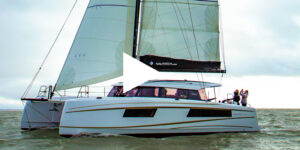
Nautitech 48 Open catamaran – Video

Nautitech 48 catamaran – Interior Design

How the Nautitech 48 catamaran was conceived – Designer Comments.
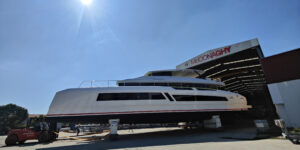
Launched ! – McConaghy MC82P Power
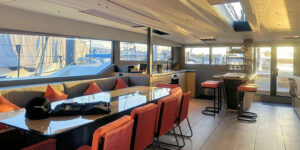
McConaghy 75 catamaran – Stunning NY Loft-Style Interior
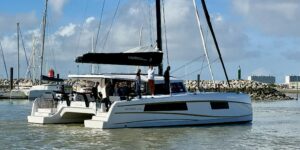

VIDEO: Nautitech 48 catamaran walkthrough. Part 1. EXTERIOR

VIDEO: Nautitech 48 catamaran walkthrough. Part 2. INTERIOR
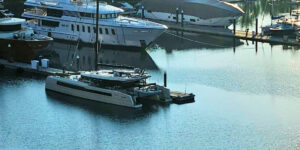
McConaghy 75 Launched.
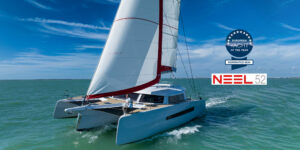
NEEL 52 trimaran nominated European Yacht of the Year 2023
Helpful tips from aeroyacht.
AEROYACHT PUBLICATIONS
Catamaran books by gregor tarjan.

JOIN AEROYACHT’S NEWSLETTER
Catamarans with Daggerboards: Enhancing Stability and Performance
by Emma Sullivan | Aug 9, 2023 | Sailboat Lifestyle
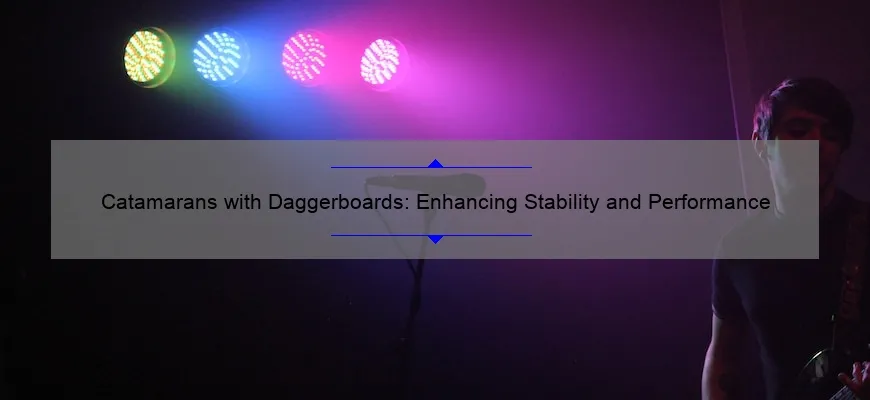
Short answer catamarans with daggerboards:
Catamarans with daggerboards are multihull sailboats consisting of two parallel hulls and vertical foils called daggerboards that can be raised or lowered. Daggerboards improve stability, reduce leeway, and increase upwind performance by minimizing side slipping. These high-performance catamarans are commonly used in racing, offshore cruising, and recreational sailing due to their enhanced speed and maneuverability capabilities.
How Catamarans with Daggerboards Enhance Sailing Performance
If you’re a sailing enthusiast, you may have heard about the growing trend of catamarans equipped with daggerboards. But what exactly are daggerboards and why do they enhance the sailing performance of these unique vessels ? In this blog post, we’ll dive into the details and give you a professional, witty, and clever explanation.
First things first – let’s understand what a catamaran is. A catamaran is a multi-hulled vessel consisting of two parallel hulls connected by a deck structure. Unlike traditional monohulls, catamarans offer increased stability due to their wider beam. This stability means more balance when sailing through choppy waters or in heavy winds . However, even with their inherent stability advantage, there’s always room for improvement when it comes to performance.
This is where daggerboards come into play. Daggerboards are vertically retractable underwater fins that can be found on both sides of a catamaran’s hulls. These boards mimic the functions of centerboards or keels found in monohulls, but with some key differences .
Unlike fixed structures on monohulls, daggerboards can be raised or lowered based on different wind and sea conditions. And trust us – this simple mechanism makes all the difference in terms of performance! By adjusting the depth at which the daggerboard extends below the waterline, sailors can optimize the flow of water around their vessel.
When cruising downwind or in lighter winds, raising the daggerboard allows for shallow draught navigation while minimizing drag created by unnecessary underwater surface area. On the other hand, when sailing upwind or encountering stronger gusts, lowering the boards increases lateral resistance and prevents sideways slippage known as leeway.
Essentially, daggerboards function as hydrofoils for catamarans . They create lift by exploiting Bernoulli’s principle – faster-moving air above generates lower pressure compared to slower-moving air below an object’s surface (or in this case, water). This lift effect counteracts the forces acting on the hulls and reduces slippage, thus improving both speed and control.
But let’s not forget about the clever engineering behind daggerboards. These modern-day marvels are crafted from lightweight yet durable materials such as carbon fiber or fiberglass, ensuring optimum strength-to-weight ratios while keeping performance at its peak. The adjustable nature of daggerboards also comes into play during maneuvers like tacking or gybing, making it easier for sailors to change direction smoothly without losing precious momentum.
So why should you care about catamarans with daggerboards? Simple – they offer a thrilling sailing experience with enhanced performance capabilities. Whether you’re seeking the adrenaline rush of competitive racing or just looking for a smooth cruise across open waters, these vessels provide unbeatable stability and speed that can take your sailing game to new heights.
In conclusion, catamarans equipped with daggerboards have revolutionized the world of sailing by maximizing performance through clever hydrodynamics and adjustability. So if you’re ready to enhance your sailing adventures with a touch of finesse and innovation, hop aboard a catamaran with daggerboards and prepare to ride the waves like never before!
Exploring the Benefits of Catamarans with Daggerboards Step by Step
Title: Exploring the Benefits of Catamarans with Daggerboards Step by Step
Introduction: Catamarans have gained widespread popularity in recent years due to their stability, speed, and spaciousness. One key element that maximizes the performance of catamarans is the presence of daggerboards . In this blog post, we will delve into the benefits of catamarans equipped with daggerboards, exploring each step involved. From improved sailing capabilities to enhanced comfort , let’s discover the remarkable advantages these sleek vessels offer.
Step 1: Understanding Daggerboards in Catamarans Daggerboards are vertically retractable appendages mounted on both hulls of a catamaran. Serving as underwater wings, they can be lowered or raised depending on sailing conditions. When deployed, daggerboards greatly contribute to a sailboat ‘s lateral resistance and stability.
Step 2: Heightened Stability at Sea One prominent advantage of catamarans with daggerboards lies in their exceptional stability. The wide beam between two hulls minimizes rolling motion even under rough sea conditions, offering an incomparable sense of security for those prone to seasickness or seeking a more comfortable cruising experience.
Step 3: Superior Upwind Performance Daggerboards revolutionize a catamaran’s ability to sail upwind effectively. By lowering both daggerboards symmetrically, the wetted surface area decreases, reducing drag significantly while maintaining lateral resistance. This enables catamarans with daggerboards to venture closer to windward than traditional keel-powered boats – an invaluable feature for sailors navigating challenging coastal or offshore routes.
Step 4: Enhancing Maneuverability When maneuvering close to shorelines or marinas, daggerboards provide heightened control and agility. Their adjustable nature allows sailors to alter their angle or completely retract them into the hulls when additional clearance is required – ensuring simple navigation through shallow waters or tight spaces where other vessels may struggle.
Step 5: Increased Speed Potential The presence of daggerboards in catamarans grants them superior speed capabilities, especially in reaching conditions. With reduced drag and improved stability, these formidable vessels can easily harness the power of the wind, gliding swiftly across open waters . Daggerboards enable a catamaran to maintain higher average speeds throughout long passages, ensuring quicker and more enjoyable journeys.
Step 6: Enhanced Safety Catamarans equipped with daggerboards boast enhanced safety features that make them an ideal choice for offshore cruising or adventurous sailing trips. By allowing sailors to control their draft depending on the sea state or desired performance, daggerboards minimize the risk of grounding or collisions with underwater hazards. This versatility enhances overall onboard safety and peace of mind.
Conclusion: Daggerboards are not merely another feature found in high-performance sailing vessels; rather, they revolutionize the way catamarans navigate through various conditions. From heightened stability at sea to improved maneuverability and increased speed potential, these retractable appendages offer unparalleled benefits for enthusiasts seeking comfort, agility, and thrilling experiences on the water . Next time you embark on a catamaran adventure, keep an eye out for those sleek daggerboards that make every voyage a remarkable one!
Frequently Asked Questions about Catamarans with Daggerboards
Are you considering purchasing a catamaran with daggerboards but find yourself overwhelmed with questions? Fear not! We have compiled a comprehensive list of frequently asked questions about catamarans equipped with daggerboards to quench your curiosity. From the advantages they offer to common misconceptions, we’ve got you covered. Join us as we delve into this intriguing topic.
1. What is a catamaran with daggerboards?
A catamaran with daggerboards is a type of sailing vessel that features two hulls connected by a platform known as the bridge deck. Unlike traditional catamarans, these innovative vessels are equipped with retractable keels called daggerboards which can be adjusted based on sailing conditions.
2. Why choose a catamaran with daggerboards over other designs?
Catamarans with daggerboards offer numerous advantages for avid sailors. Firstly, their ability to retract or extend the boards allows for enhanced maneuverability and increased speed in different weather conditions . This means greater control when sailing upwind or in shallow waters where other boat types might struggle.
3. How do daggerboards affect performance?
Daggerboards significantly improve sailing performance by reducing sideways drift (known as leeway) and increasing the lateral resistance provided by the keels. By adjusting their position according to wind direction, sailors can optimize their boat’s angle against prevailing forces and achieve higher speeds.
4. Do I need any special skills to handle a catamaran with daggerboards?
While operating any sailboat requires some level of skill and experience, handling a catamaran with daggerboards doesn’t demand extraordinary expertise. As long as you possess basic sailing knowledge and understand how to utilize the adjustable keels effectively, you’ll be able to harness the full potential of these vessels easily.
5. Are there any drawbacks to using daggerboards?
Although the advantages of using daggerboards significantly outweigh potential downsides, there are some considerations worth mentioning. Catamarans equipped with daggerboards may have a higher initial cost compared to other designs due to their specialized construction. Additionally, maintenance and repairs for the daggerboard mechanisms might require more attention.
6. Can I still sail a catamaran with daggerboards in shallow waters?
Absolutely! The retractable nature of daggerboards enables catamarans to navigate shallow waters with ease. By lifting the boards, you can safely venture into areas where conventional keels would prohibit passage, opening up new possibilities for exploration while maintaining stability.
7. Are catamarans with daggerboards faster than those without?
The adjustable nature of daggerboards does provide potential for increased speed, particularly when sailing close to the wind or upwind . The reduced drag caused by retracted boards allows these vessels to efficiently glide through the water, resulting in impressive acceleration and velocity that can outperform traditional catamarans.
8. Are there any misconceptions surrounding catamarans with daggerboards?
Indeed, a common misconception is that daggerboards are solely beneficial for racing purposes or experienced sailors seeking high-performance vessels . However, these boats are equally suitable for cruising enthusiasts looking to enjoy enhanced control, stability, and overall comfort during their nautical adventures.
In conclusion, choosing a catamaran with retractable daggerboards offers an innovative approach to sailing characterized by improved performance and adaptability across various conditions. Novice or seasoned sailors alike can make the most of these unique vessels while exploring shallow waters or harnessing greater speed capabilities. So set sail confidently on your next maritime adventure armed with knowledge about these fascinating catamarans!
Understanding the Mechanics Behind Catamarans with Daggerboards
When it comes to sailing, catamarans have gained considerable popularity due to their stability and speed. But what sets these sleek vessels apart from traditional monohull sailboats ? The answer lies in their unique design, particularly the incorporation of daggerboards. In this blog post, we will dive deep into understanding the mechanics behind catamarans with daggerboards, shedding light on why they are favored by sailors all over the world.
To begin with, let’s familiarize ourselves with the fundamental concept of a catamaran. Unlike monohulls that have a single hull cutting through the water, catamarans boast two parallel hulls connected by a platform or bridge called the trampoline. This setup enhances stability and prevents excessive rolling, making them an excellent choice for those looking for a smooth and comfortable sailing experience.
However, it is worth noting that stability alone does not guarantee optimal performance . That’s where daggerboards come into play. These vertically oriented keels perform multiple functions that elevate a catamaran ‘s capabilities and maneuverability.
Firstly, let’s understand what exactly a daggerboard is. A daggerboard is essentially a retractable keel located within each hull of a catamaran. These boards are designed to slide up and down vertically through special slots or cases known as trunkings in order to adjust their depth beneath the waterline.
One of the primary roles of daggerboards is to counteract leeway – the sideways movement experienced by boats when subjected to wind pressure against their sails . By adjusting the depth of daggerboards on either side independently, sailors can effectively control leeway and sail closer to the wind without significant drifting off course.
In addition to countering leeway, these clever appendages also enhance upwind performance—a crucial aspect for competitive racing or efficient long-distance sailing . When fully deployed, daggerboards create additional lift as water flows over them at high speeds . This lift opposes the sideways force acting on the boat from the wind, allowing the catamaran to maintain a more efficient angle into the wind and achieve higher speeds.
Furthermore, daggerboards play a crucial role in preventing capsizing – an occasional nightmare for sailors. By adjusting the depth of daggerboards when facing strong gusts or turbulent sea conditions, sailors can maintain balance and stability, reducing the risk of flipping over.
It’s important to note that daggerboards are highly adjustable and require skillful handling by experienced sailors. Proper adjustment involves considering various factors like wind speed, boat speed, sea state , and desired sailing objectives. Fine-tuning these elements allows sailors to optimize performance in different conditions while keeping safety in mind.
While some catamarans utilize fixed keels or even foils instead of daggerboards, traditional daggerboard designs continue to dominate due to their simplicity, reliability, and cost-effectiveness. They offer versatility across a range of sailing styles from leisure cruising to competitive racing.
In conclusion, understanding the mechanics behind catamarans with daggerboards is essential for anyone looking to venture into this sailing realm. From countering leeway and optimizing upwind performance to enhancing stability and preventing capsizing; these retractable keels serve as invaluable tools in ensuring a safe yet exhilarating experience on the water. So next time you see a catamaran gliding effortlessly through waves with precision-like control, you’ll have an appreciation for the intricate role played by its trusty daggerboards.
Why Choosing a Catamaran with Daggerboards Can Revolutionize your Sailing Experience
Choosing a catamaran with daggerboards can completely revolutionize your sailing experience, taking it to new heights of performance and excitement. These sleek and innovative designs offer numerous advantages that will leave you wondering why you ever sailed on a traditional monohull.
Firstly, let’s talk about speed. Catamarans with daggerboards are known for their incredible acceleration and high top speeds. The combination of the streamlined hulls and adjustable daggerboards allows these vessels to slice through the water effortlessly, leaving monohulls in their wake. Imagine the thrill of gliding across the waves at exhilarating speeds, feeling the power of the wind pushing you forward – an experience that will make you truly feel alive.
But it’s not just about speed; catamarans with daggerboards also excel in upwind sailing. Due to their narrow beam and powerful sail plan, these boats can efficiently navigate against the wind , tacking smoothly without losing momentum. With each tack, you’ll notice how effortlessly the daggerboards optimize your angle towards the wind, giving you an advantage over other sailors struggling to maintain course.
One of the most significant advantages of catamarans with daggerboards is their ability to sail in shallow waters. By retracting the daggerboards partially or fully, depending on conditions, these boats can access secluded beaches, anchor closer to shorelines, or explore hidden coves inaccessible to larger vessels. The flexibility and freedom they provide allow for endless possibilities when it comes to island hopping or discovering remote destinations.
In terms of stability, nothing compares to a catamaran with daggerboards. Unlike monohulls that heel dramatically while sailing at high speeds or encountering rough seas, these two-hulled beauties remain steady as a rock thanks to their wide stance and deep-draft daggerboards. You’ll appreciate this stability when cooking onboard during passage or simply enjoying a relaxing day out on calm waters without being constantly tossed around by waves.
Furthermore, catamarans with daggerboards offer a spacious and comfortable living area. With their open, airy layouts, these vessels provide ample room for entertaining guests or accommodating a large group of family and friends on extended voyages. The absence of heeling also means there’s no longer any need to adjust your lifestyle to counteract the boat’s movement, allowing you to live onboard with ease and comfort.
Finally, catamarans with daggerboards are often praised for their low fuel consumption. Due to their lightweight construction and reduced drag caused by the daggerboards, these boats require less power to propel them through the water compared to traditional monohulls. This not only saves money but also serves as a step towards environmentally conscious sailing .
In conclusion, choosing a catamaran with daggerboards will undoubtedly revolutionize your sailing experience. From the exhilarating speed and upwind performance to the ability to navigate shallow waters effortlessly, this innovative design offers unmatched advantages that will enhance every aspect of your time on the water. Get ready to embark on an unforgettable adventure where excitement meets comfort and where possibilities become truly limitless!
Tips and Tricks for Maintaining and Caring for Catamarans with Daggerboards
Title: Mastering the Art of Catamaran Care: Unleashing the Potential of Daggerboards
Introduction: Ah, catamarans! The epitome of grace and freedom on water. These magnificent vessels offer a unique sailing experience, especially if equipped with daggerboards. These retractable appendages not only enhance performance but also require special attention when it comes to maintenance and care. Today, we are here to unveil our arsenal of professional, witty, and clever tips and tricks for maintaining and caring for catamarans with daggerboards.
1. Raise Your Daggerboard Awareness: To truly understand your catamaran ‘s daggerboards, it is crucial to comprehend their purpose and functionality. Daggerboards act as underwater foils that counteract lateral forces, providing stability and control while sailing. Take time to study their design, engage in valuable online discussions or seek guidance from experienced sailors.
2. Regular Inspection is Key: Just like any other component on your vessel, regular inspection of your daggerboards is essential. Check for wear and tear, potential damage or cracks in the boards themselves or within their housing compartments. Be thorough during inspections to nip any issues in the bud before they snowball into costly repairs or replacements.
3. Smooth Operators: Lubrication Matters! Smoothly operating daggerboards directly impact your sailing experience; squeaky boards are no one’s favorite soundtrack out at sea! Regularly lubricate the sliding mechanisms using suitable marine-grade lubricants – avoiding excessive amounts that could attract dirt or grime – ensuring silent sailing moments that will make you look like a seasoned pro.
4. The Battle Against Corrosion: Saltwater can be both a catamaran’s best friend and sworn enemy simultaneously—the latter being particularly true for metals prone to corrosion. Apply protective coatings or paints specifically designed for underwater use onto metallic portions exposed to oceanic elements surrounding your daggerboard system.
5. Float Like a Feather: Balancing Act: Balance is the key to successful catamaran navigation . Daggerboards play a significant role in maintaining equilibrium while underway. Monitor their vertical alignment carefully, ensuring they are both correctly deployed and fully retracted when needed. Avoid compromising performance by avoiding conditions that push the limits of your daggerboard’s deployment range.
6. Cleanliness above All: Just as your daggerboards slice through the water realm, they can also gather unwanted hitchhikers along the way. Regularly clean their surfaces to eliminate marine organisms, barnacles, or algae that, if left unchecked, can affect hydrodynamics and impose unnecessary drag on your vessel’s overall performance.
7. Seek Professional Guidance: When in doubt or dealing with a problem you cannot confidently resolve yourself – never hesitate to seek professional help! Experienced boat builders or naval architects can provide invaluable advice tailored specifically to your catamaran and its daggerboard configuration.
Conclusion: Catamarans equipped with daggerboards offer an exceptional sailing experience that deserves meticulous care and attention. By following these professional, witty, and clever tips for maintaining and caring for such vessels, you’ll ensure smooth operations and prolong the lifespan of your beloved catamaran with ease. So set sail confidently into endless horizons as you master the art of catamaran care – unleashing the full potential of those marvelous daggerboards!
Recent Posts
- Approaching a Mooring Buoy: Essential Tips for Safe Navigation
- Best Tiller Autopilot: Enhance Your Sailing Experience
- Nautical Navigator: Essential Tools and Techniques for Seamanship
- Sail Making Material: A Comprehensive Guide
- 2 Person Dinghy: The Ultimate Guide to Choosing the Perfect Boat
- Sailboat Gear and Equipment
- Sailboat Lifestyle
- Sailboat Maintenance
- Sailboat Racing
- Sailboat Tips and Tricks
- Sailboat Types
- Sailing Adventures
- Sailing Destinations
- Sailing Safety
- Sailing Techniques

- Tokyo Express
- Small Boats
- Geelong Model 850
- Plans (all)
- Noosa Plans
- Tewantin Plans
- Geelong Plans
- Daggerboard Plans
- Daggerboards
- Consulting / Drafting
- Terms & Conditions
- Privacy Policy
Select Page
Daggerboard – the importance of in catamaran sailing
Posted by Tim Weston | Aug 13, 2017 | Cruising , Daggerboards | 3 |
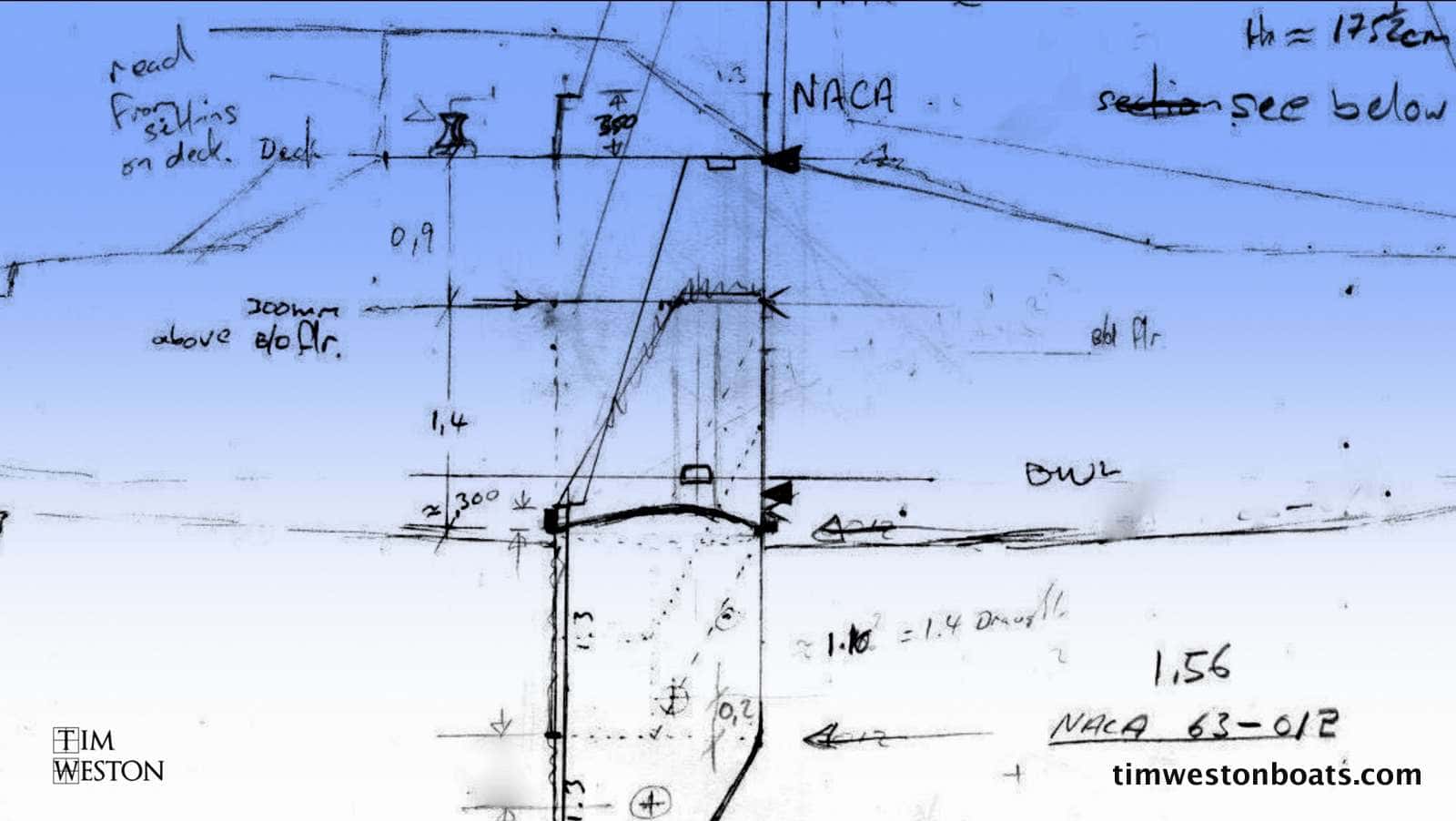
The importance of a daggerboard – in catamaran sailing.
Demystifying the daggerboard. There is nothing mystical about cats that make them inherently poor performers going to wind. In fact, the opposite is true, cats have inherent qualities that make them better than a keel yacht in windward performance. Not leaning over is one of them.
The daggerboard seems to be one of the most misunderstood pieces of equipment on a multihull. Debates on forums and blogs about daggerboards vs mini-keels are many. What are they for? Are two daggerboards better than one? Should you pull them up when going downwind or in a storm? One or both and which side? There seem to be as many opinions are there are blog posts on the subject. They were a mystery to me too when I built my boat, and after a year in the water, I too learned how frustrating it was, going to wind on a cat. I needed to learn more.
Daggerboards and going to wind
I built a 40ft catamaran back in the 90s called “Tokyo Express”. A cruiser/racer that was lightweight and fast downwind and on a reach. But beating to wind was hard work; I covered a lot of ground fast but progress toward my destination was poor.
After a lot of measuring, recording and testing I took all the data I’d gathered and spent months in libraries, going through all the textbooks I could get my hands on, reading up on the hydrodynamics of sailing.
The conclusion I came to was a simple one. Catamarans just don’t have enough keel area. As simple as that. The daggerboards on most cats are way too small. I also believe that their short chords work against them not for them, and mini-keels are, no surprise, worse still.
Cats only seem to get given small daggerboards
Maybe the reasoning designers have for using such small boards (compared to the keel on a similar size monohull), is that because cats are faster, they don’t need as much board area. The trouble is you don’t always move fast, and sometimes speed is the last thing you want. Hauling to wind in heavy weather is one scenario. Once you slow down below the speed, the boards were designed to operate, you have a problem. But even at speed, they don’t point well.
So I left my boat at anchor and spent 3 months in my shed, designing and building a new daggerboard to replace the original ones. One large board instead of two, with 150% more surface area than the original boards put together. I slipped the yacht and installed the new Case and daggerboard, then headed out for my first sail. It was a different boat, totally. It went to wind as I’d never experienced before.
I could now sail as hard to wind as a keel yacht, but faster. I only raced the boat once, in the Whitsundays back in the winter of 1998. It was a fun-race, at the end of a week of racing; most of the boats were racing yachts. Starting on a handicap, 10th last over the start line, behind 130 boats. I headed off on the single lap that we all sailed around, a triangular course with 2 legs hard on the wind and a downwind leg to the finish.
On the first leg, I overtook half of the fleet, sailing as high as, and faster than the racing keel yachts. On the second leg, I passed more boats including all the multihulls, to finish 20th overall behind the large million dollar maxi’s, that started too far in front of me to catch.
The weakest link
The power of the rig depends on the power of the daggerboard that opposes it. If the daggerboard can’t provide the reaction needed, to the sideward forces generated by the sails, then you will not get the most out of your rig. If the board can’t handle the forces of the rig, it will stall or semi-stall, allowing the boat to get pushed sideways.
What I noticed most when this happened, was that the rudders loaded up and the boat was difficult to steer. The high side loads caused my rudders to become difficult to turn, and I eventually burned out the autopilot. The rudders were doing what they weren’t designed to do, go sideways through the water.
So I would ease off the wind, reducing the side-load and picking up speed. With the extra speed, the boards generate more lift and the sideslip would reduce enough for steering to improve. Now I was zooming along, but not going where I wanted to go. You need to move fast to get the boards to work, but the extra speed was a waste of time because I couldn’t point high. In heavy weather, I suffered a less than comfortable ride going back and forwards across the wind, instead of making good velocity towards my destination.
Safe (as well as fast)
These problems vanished after I installed the single daggerboard. I sailed for the next 3 years with the new board; it was the best thing I ever did. It saved my butt in the Pacific, and maybe even our lives, in storms my partner and I encountered on the return trip to Australia from New Caledonia and Vanuatu.
Sailing single-handed with a seasick partner, I could get some sleep at night despite the storms. On the 8 day trip out to Noumea, I made headway going to wind in huge seas comfortably, by reefing down and pulling the boat hard up to the wind, locking the boat to the apparent wind using the autopilot coupled to the wind vane.
This kept the speed down and under control, as there was a big sea running and it was rough. I could point high and make good progress toward my destination with my speed under control. The boat followed the wind shifts, hard on the wind with a steady 7kts. Even under these conditions of extreme wind, and slow boat speed, there was no sideslip. The steering was effortless and the small autopilot I’d since replaced could do the job without problems.
The boat drove like a tractor upwind and I think that is the best analogy I can think of to describe it. I couldn’t imagine being out there in those conditions the way the boat used to sail; hard to steer, half out of control and not going to where I wanted to go.
The daggerboard is the heart of a multihull
You can have the slipperiest of hulls, lightest of boats and most expensive rig, but if you don’t have this part of the boat right, you are not getting good returns on the money spent in the other areas. It doesn’t matter if you are racing or cruising, the ability to go to wind makes or breaks a boat. I have a video about the daggerboard, on youtube.
If you aren’t happy with your cat’s performance and are interested to do something about it, I now have plans available, so you can build a large daggerboard yourself.
Whether you are building a new boat, or you own a cat already, you can replace the original boards with a big one, that will change your boat forever. You won’t recognise your boat afterwards, and as a bonus, you win a lot more room in the hull without the 2 nd board, i.e. freeing up space in the galley. Check out the new webpage for more details and if you would like more information, send me an email .
I hope this has been helpful.
PS — I have a book out now “ Building Tokyo Express ”, with the story of the building of my cat. The next book coming is due early 2020; it’s the story of the 5 years I lived aboard TE and goes into a lot of detail about sailing with this board, and the valuable lessons I learned. Subscribe on the website, and grab the book when it launches at the intro price.
Share this:
- Click to share on Facebook (Opens in new window)
- Click to share on Reddit (Opens in new window)
- Click to share on WhatsApp (Opens in new window)
- Click to share on Pinterest (Opens in new window)
Related Posts
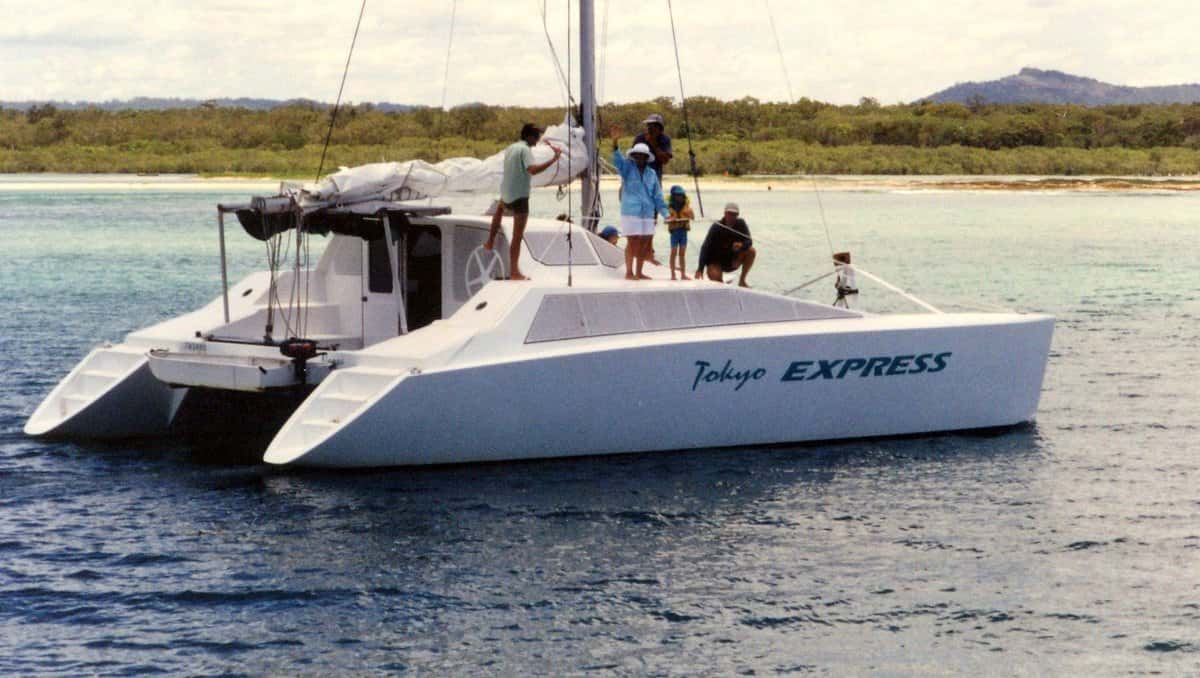
Cruising video is up
August 30, 2016
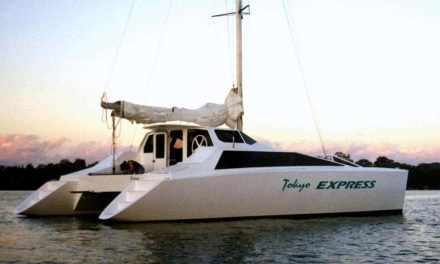
- Catamaran vs Monohull
March 11, 2019
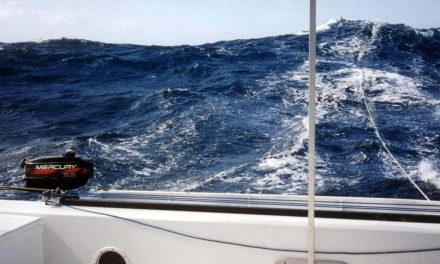
- Catamaran size – how big a boat do you need – ocean sailing
October 18, 2017
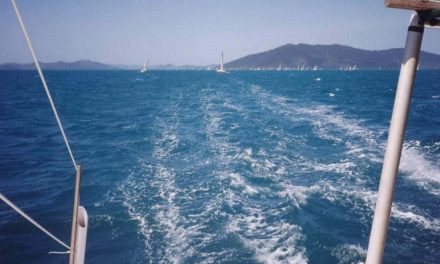
How fast are catamarans
May 23, 2017
Thanks for posting this information!
Very interesting I recently sail A 6 meter beach cat Thanks
I built the UNI-CAT a fun 14 foot x 7 ft boat the solution to dagger boards for that was to use 4 very & narrow short boards that could rotate slightly 2/3 back from the leading when inserted in their slots. In light winds use all 4, but in stronger winds use only 2. They only added 1 foot to the draft but because thet pointed into wind the boat could point to where you were headed without side drift. Later I modified it to use only 1 but controlled the amount of rotation.
What do you think? Leave your comment.. Cancel reply
Search site, new book – just released.
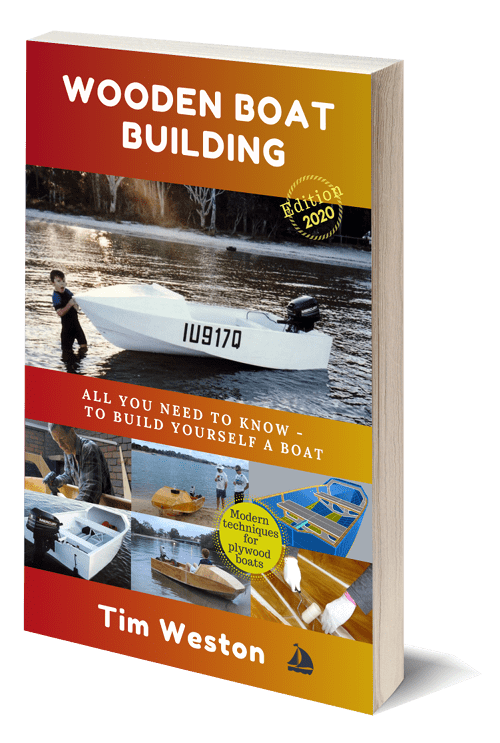
Watch the Video Series – (1 hour & 45 mins)
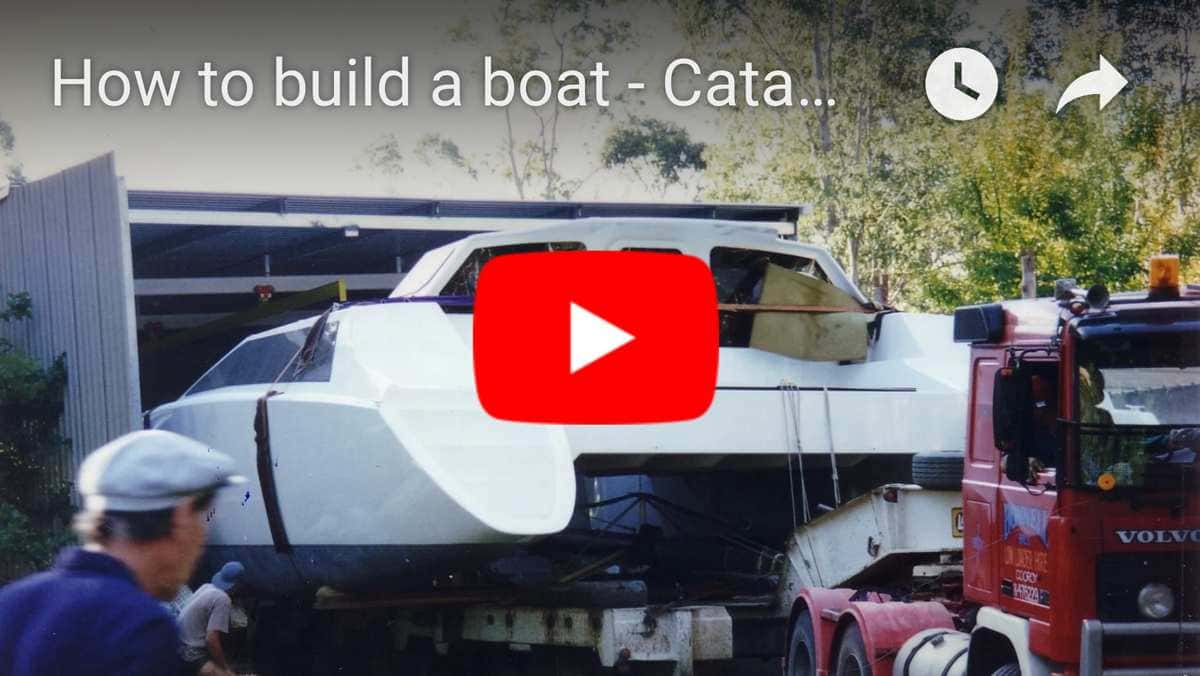
Recent Posts
- Going fast – in small boats – hull speed.
- Keeping safe – while building your boat
- How much does it cost to build a boat – a 40ft Catamaran?
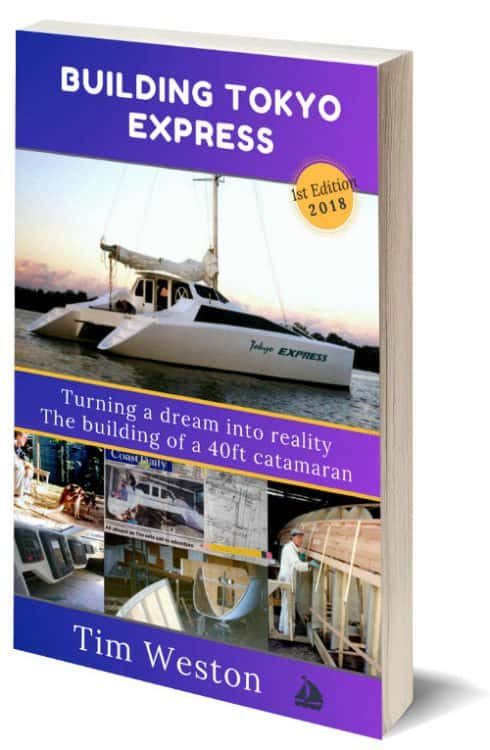
Get the Guide – Free
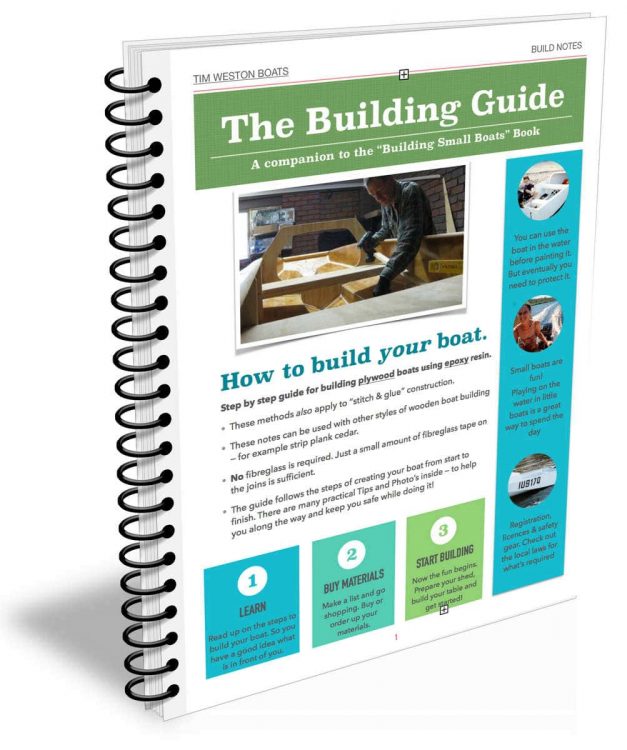
Privacy Overview
Daggerboards
The majority of today's cruising catamarans are equipped with mini keels for reliable and hassle-free operation. There are fewer than a handful of production daggerboard catamarans, which provide the sailor slightly more pointing ability and other advantages as illustrated in previous chapters. Their operation is generally straightforward via either a single uphaul line in case the board is heavier than water, or by an additional downhaul to keep the foil lowered, in case it is more buoyant.
Needless to say, when trying to point as high as possible, the leeward board should be fully deployed. The finer the hulls of the catamaran and deeper the foils are, the more they will contribute to getting the multihull to windward. In very rough conditions, when the boat will be thrown around by wind and waves, it is a good idea to divide the loads between both boards and only let them halfway down.
Marking the daggerboards at deck level will help indicate a "control" depth and assist in judging when they will be extending deeper than the rudders and thus aid in protecing them in case of a collision.
For a more detailed description of daggerboards and their use, please refer to the "Appendages" chapter.
Continue reading here: Tacking
Was this article helpful?
Recommended Programs

Myboatplans 518 Boat Plans

Boat Alert Hull ID History Search

3D Boat Design Software Package
Related Posts
- Reefing - Catamarans Guide
- Appendages - Catamarans Guide
- Explain The Hydrodynamics Of A Daggerboard
- Catamaran Design Guide - Catamarans Guide
- Rudders - Catamarans Guide
- How Are Catamaran Masts Fixed Down
- € 0.00 0 items
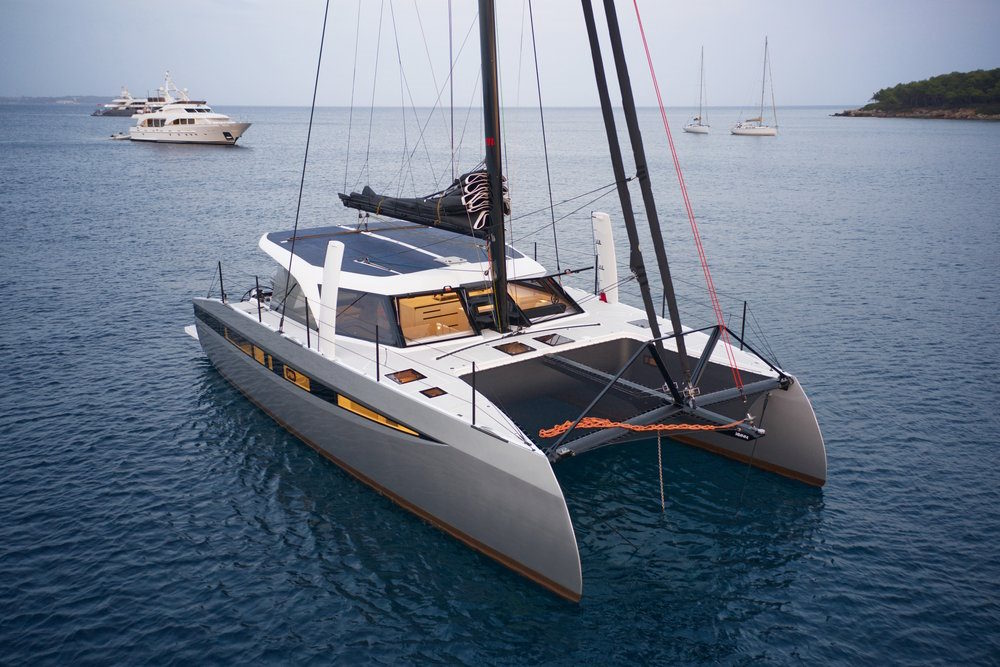
Description
The first HH44 was launched in 2023 and premiered at the Cannes International Yachting Festival. This innovative design is the “baby” of the HH Catamarans range and has some interesting features such as her closed transoms, swing aft helms and a side boarding gate aft.
She’s a very pretty cat and will turn heads in the marina. This is HH’s first hybrid electric-powered catamaran although you can also opt for standard diesel power with shaft drives.
There are 2 versions, like much of the HH range. The Sports Cruising model: HH44-SC and the Ocean Cruising model: HH44-OC. The SC version is a “no-compromise-boat” with C-shaped carbon daggerboards, a carbon rig, a painted hull finish and 4,232 watts of solar with EcoDrive.
The OC saves you some money with the same hull, interior fit and finish quality as the sportier SC but with an aluminium mast, e-glass longeron, white gelcoat finish and mini-keels as standard.
Many of the ideas on this boat have been driven by a desire to maximise solar generation. There are 4,232W of peak solar on the cabin top alone with an option for more on the davits.
To maximise the solar, they have positioned the helms aft in a traditional sporty set-up. That way, there’s plenty of surface area up top to load on solar.
To help you stay protected in weather, these swing inboard, under the long coach-roof.
There are foldaway seats that tuck into the sides allowing you to either steer the boat from an outboard position with the wind in your hair and your sails’ tell-tales in full view.
Or swing the helms inboard and steer from the protected three-seat sofa on the aft beam.
To make it easy to board the boat in the marina, there is a side gate aft for when you come in along the dock.
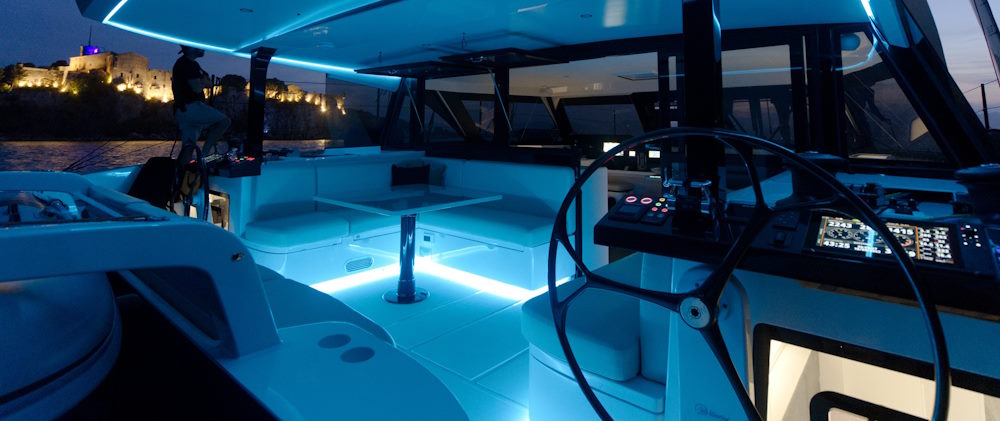
The HH44 has been designed to sail. The whole idea behind this catamaran is to get sailing in light winds (you should match wind speed on a beam reach) and to maximise your SOG over a wide range of conditions.
So she has a self-tacking staysail, a solent, a fractional reacher and a furling gennaker. The boom is very low over the coach-roof which keeps the centre of effort from the mainsail low.
There is a traveller aft on the coach-roof to manage your mainsail shape. The HH44 points well into the wind (45 TWA) thanks to her C-shaped daggerboards which provide a bit of lift at speed.
All the lines come back to the helm, so she is set up for short-handed sailing.
- Light, rigid and fast, the HH44 is a great sailor
- Swing aft helms give you flexibility while opening up the living space in the aft cockpit
- The finish on this boat is excellent
- Those closed transoms create a safe enclosed living space. They’ll also save you money in the marina
- A great looking boat that should hold her value well in the market due to the high demand
- The EcoDrive strikes a great balance between electric motoring with back-up diesels for safety
- With those aft helms, visibility is reduced towards the opposite bow, although the sight lines through the salon windows is good.
- This is not a cheap yacht
- The forward cabin is cosy. There is an option for a Pullman berth here (or convert to a workspace)
- The bow lockers seem small, although they are deep
Light Construction
Carbon and epoxy have been used to build as strong and stiff a yacht as possible while minimising the weight.
All of the lines run under the decks, so you have clear walkways around the boat. Stanchions are 900mm tall and a continuous, unbroken toe rail runs the length of the deck with all hull and deck joints fused and hidden.
Living Space
Moving inside, you’ll notice that the aft cockpit and salon forms one fully protected space with a large sofa on the aft beam and her closed transoms make this a safe family boat.
The angular cabin has two large, forward-facing windows that open fully from the the generously sized (187 sq ft or 17.4m2) salon. The standing height is over 2m (6’6”) high throughout.
One of the things that sets the HH44 apart from her competition is the quality of the finish on this semi-custom yacht. She has foam core furniture and exceptional joinery throughout, and Bosch electric appliances as standard.
There are two options for a BBQ, one which replaces the aft sofa with a large LPG BBQ & Dive Tank station or you can mount an LPG Grill in the aft fishing rod holder, keeping the aft sofa. There is an outlet on the aft beam so you can run an electric BBQ.
In the salon, there is an L-shaped sofa with a table forward to starboard and a large nav station/workstation to port.
Tuck yourself into the U-shaped galley behind the nav station or pull out some cold ones from the fridge on the starboard side. The ventilation at anchor is excellent with those huge forward windows.
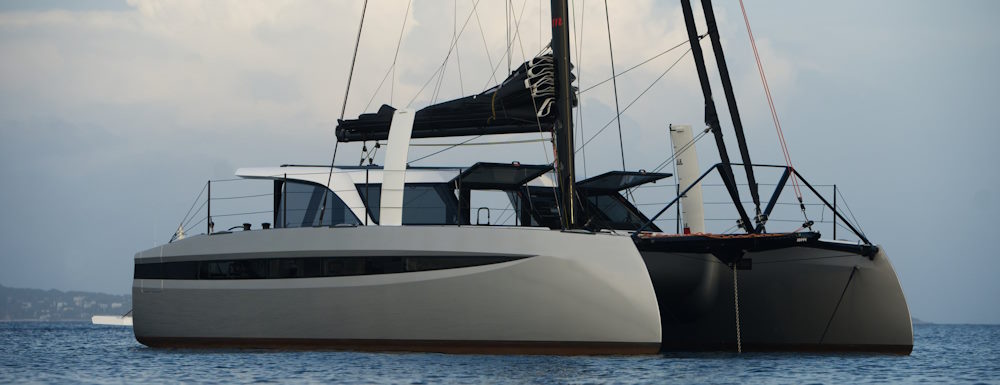
The starboard hull is the owner’s side and consists of the master cabin aft and a walk-in shower and head forward. The finish has an Italian feel to it and it is very light down here with a large window aft in the owner’s cabin.
This is a 44 foot performance cat, so there is not as much room down her as you’d find in a cruising cat, but she has ample space in the aft cabin and the storage is well organised.
HH offers three different forward cabin combinations. One is the standard layout with a single berth.
The second has a Pullman berth above the standard bed that folds away when not needed.
A third option does away with the beds and replaces them with a large work bench with shelves (for pantry storage or tools) and an extra Fridge/Freezer unit.
If you go for the option with the EcoDrive, the House Bank is powerful enough to run the A/C overnight without the need to run a generator. There is enough power to run the A/C in the master cabin for over three days.
EcoDrive, her Electric/Diesel Parallel Hybrid System The HH44 was designed from scratch to work with a parallel electric/diesel hybrid, with a minimum of 4,232W of peak solar array on the cabin top and hydro-regeneration while sailing.
EcoDrive gives you silent fume-free motoring at 7.5kts, fast torque for manoeuvring, and hydro-regeneration while sailing. Plus you have parallel, trusty diesel engines for safety.
A diesel engine is paired with a large electric motor, much like an alternator sits on a traditional diesel engine. A belt links the two units and a camshaft allows you to flip between the two power systems, giving you good redundancy. And remember, you have 2 of these systems on board!
The system is designed to offer from 1.5 to 3 hours of electric propulsion: more than enough time to exit the marina or anchorage and hoist the sails.
This boat has been designed to get sailing in light winds which ultimately is the key to an eco-friendly sailing yacht. And you will be recharging your batteries as you sail.
You can also fit the HH44 with traditional standalone diesel engines with shaft drives.
The HH44 is an innovative design that will appeal to sailors setting out across long distances who want to sail more and beat well to windward when needed. This yacht is in a different price league to something like an Aventura 37 of course, but there are two options here: the Sports Cruising and the Ocean Cruising models.
She’s a comfortable boat, although there is a trade-off on space down below particularly in the forward cabins.
With the EcoDrive option and a bow locker full of sails, you’ll be able to minimise your diesel usage on this boat while crossing oceans safely and quickly.
What is the price of an HH44? How much do they cost? The sportier HH44-SC starts at $1,325,000. Meanwhile the HH44-OC version starts at $957,000 USD. The total cost will vary depending on your options, but you should budget an additional $300k, perhaps more for the SC.
How much solar is there on the HH44? The HH44 has a generous 4,232W of peak solar as standard on the SC on the cabin top. You can fit 1,200W watts over the Davits, but this comes with a weight penalty.
What is the length of the boat with transoms up? With the transoms up, the LOA from davits to Bow Sprit is 14.23m (46.68 feet), so fine for a 15m berth.
What size tender can you carry? The optimum sized tender is 3-3.5m (10-11 foot). The davits are carbon fibre and will soak up a high load.
Technical Specification
Related Catamarans
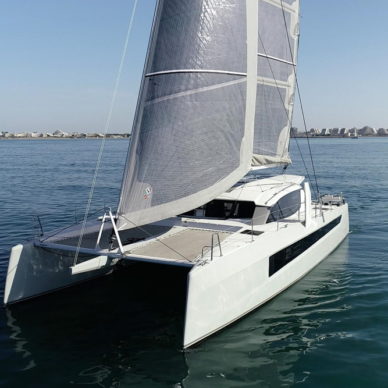
Dazcat 1495
Browse, search and find your perfect catamaran!
Privacy Overview
- Custom Cats
- Performance Cats
- Cruising Cats
- Luxury Cats
- Owner Reviews
- YT Channels

(215) 508-2704
- Tao Catamarans
- Dolphin Catamarans
- Voyage Catamarans
- All Pre-Owned Catamarans
- Exclusive TMC Catamarans
- Sold Catamarans
- Buying A Multihull
- Selling A Multihull
- Sailing Schools
- Yacht Charters
- TMC Newsletter
- Employment Opportunities
- Mission Statement
- Affiliations
Performance Study of Daggerboards Versus Keels
Story by Phillip Berman / August 17, 2018
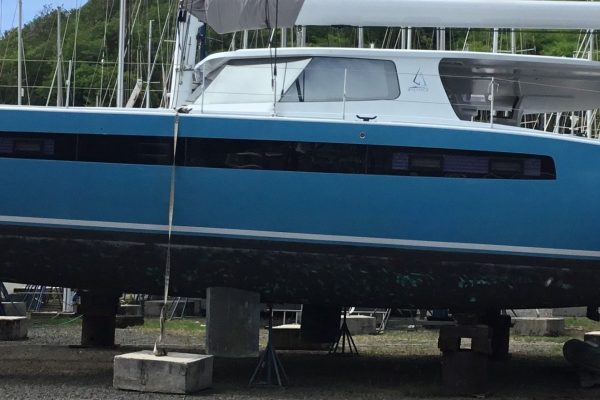
By: Phillip Berman, published with editor’s permission from Boating NZ and Blue Water Sailing
In my forty-five year career in the catamaran industry there’s been a relentless debate on the virtues and vices of daggerboards versus fixed keels. This debate has, however, mostly been waged without “hard numbers” from which to compare performance differences. As we have had requests at Balance Catamarans for both keels and daggerboards, Anton Du Toit (my design partner) and I felt we should conduct a study, the results of which follow.
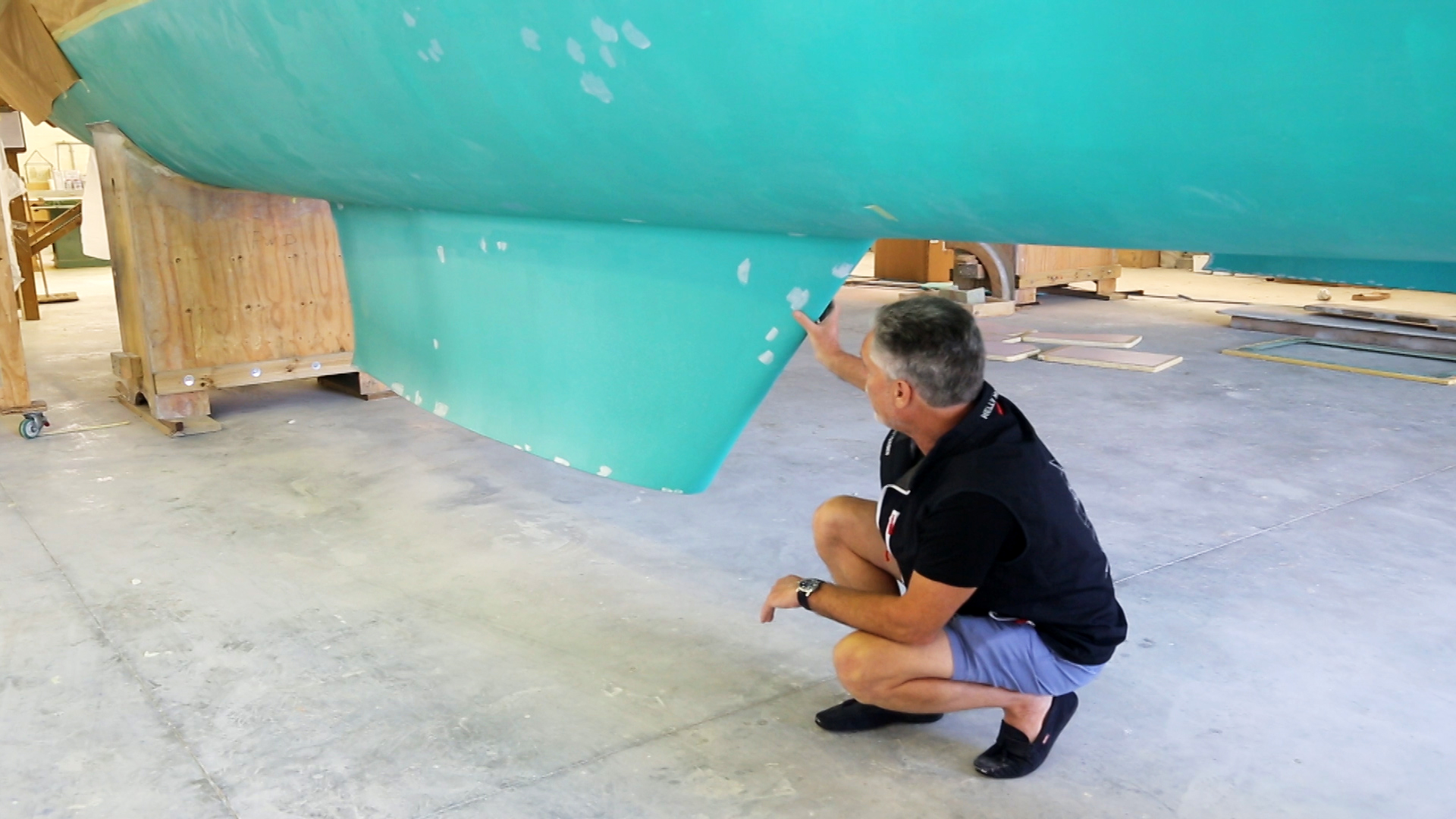
When we first set out to design and construct the Balance 526 we were aiming for cruising couples who wanted more performance and quality than they could find in mass production cats, but also more interior space, payload capacity and ease of use and maintenance than consumers focusing primarily on speed. Our intent was to find the balance – not to create the “lightest and fastest 52” in the world, or the “largest 52,” but a catamaran that could sail swiftly on all points of sail, carry significant levels of payload, yet still be gracious to live on. We also wanted her to be pleasing to the eye.
Our focus at Balance brings us an interesting range of buyers, some of whom are more focused on strength, space, safety and comfort rather than all out speed (cruiser types), others who are more speed focused, less value oriented, and prepared to give up comfort, ease of operation and payload capacity to go a bit faster (racer types). The later sorts of buyers are mostly what I affectionately call “spreadsheet guys.” (Full disclosure: I am not a spreadsheet guy. I am far more focused on how a boat lives, how tough she is, what she can carry, and how simple she is to sail and maintain without a professional crew.)
As we have gone along a few of our customers have asked if we would create the 526 with performance keels rather than daggerboards. They felt that the advantages of keels trumped the performance advantages of boards. We were happy to comply, so Anton set about to design high performance keels for the 526. (Note: On our 451, we only offer her with dual daggerboards and two shallow permanent fixed minikeels. On all other Balance designs it remains customer choice which configuration they wish to have.)
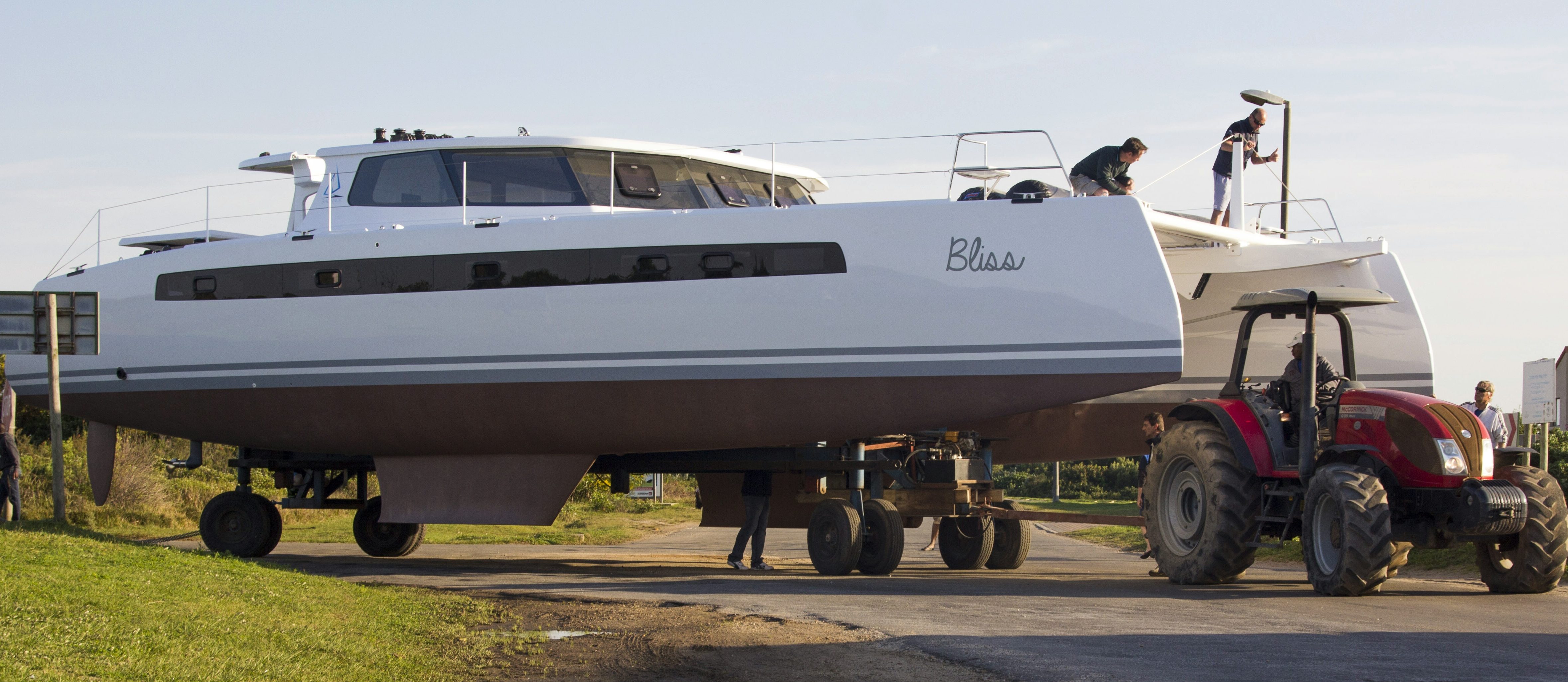
What we were not prepared to do was tell 526 buyers how much faster or slower the two different configurations would be. We felt it best to heed Lord Bryon’s advice to evade “kant and hyperbole” (the language of the day at boat shows!) so we hired the Wolfson Unit for Marine Technology and Industrial Aerodynamics at the University of Southampton to conduct comparative studies of the two configurations on identical 526 models. When you are comparing identical products with just two different variables it seemed a worthwhile study to undertake and share with our customers. It also becomes, to some extent, a worthwhile study for anyone considering a new or used catamaran purchase who is curious how the two different configurations impact performance.
While Anton and I believe these studies can be used by consumers to compare the relative performance differences between boards and keels, it is important to note that the 526 is a very light, narrowhulled epoxy performance cat and the keels we install are considerably finer, deeper and more carefullyshaped than those found on mass production designs. Additionally, we conducted the study with the daggerboards in the fully down position on all points of sail to reduce the studies complexity. The daggerboarded 526 would be marginally faster than the study indicates off- the-wind with boards raised due to a further reduction of wetted surface.
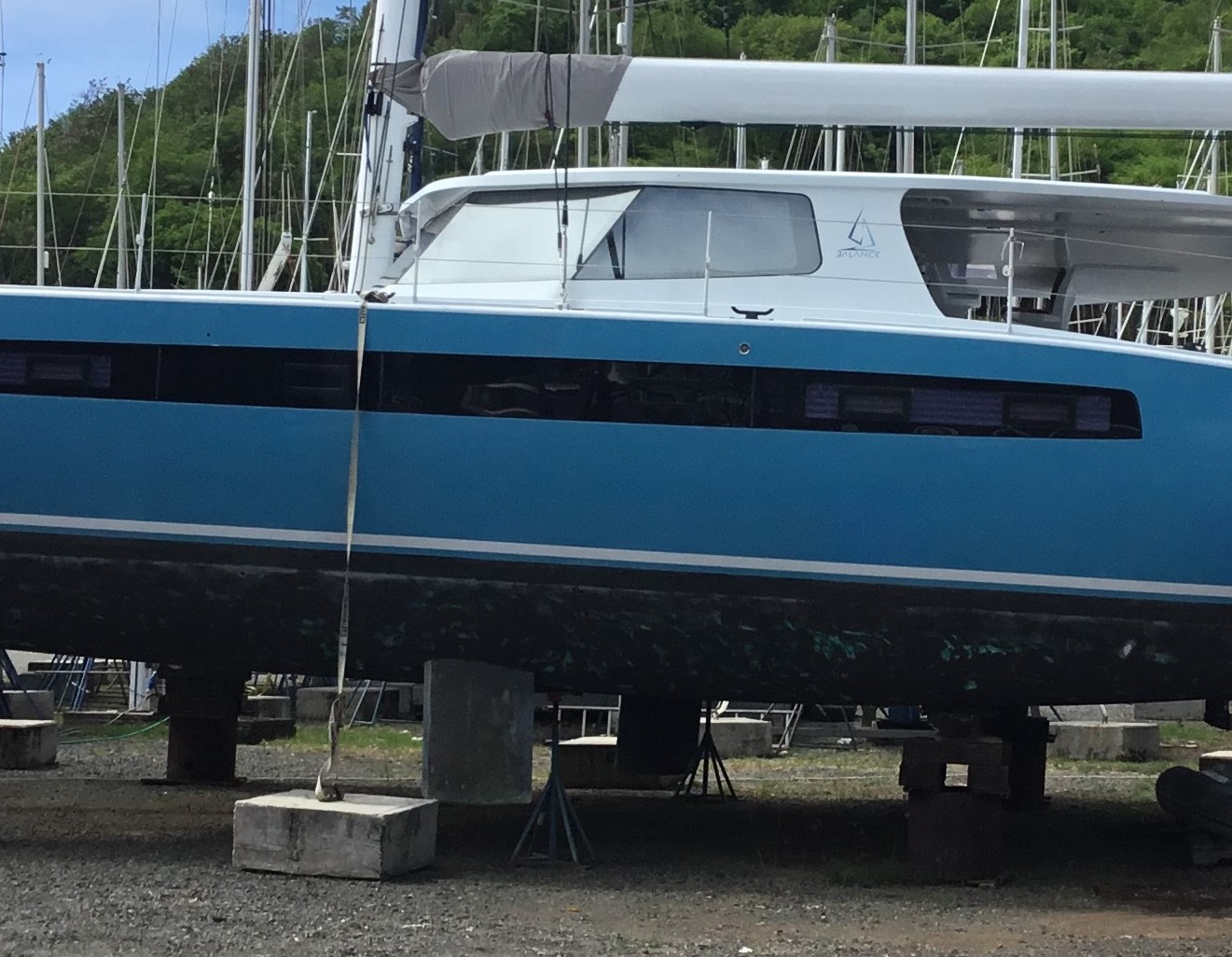
The disparity between keels and boards on a mass-production cat compared to a Balance or any other performance cat would be exaggerated considerably compared to the study that follows. I would note that we erred on the side of caution in setting our lightship weight for this study at 12.5 kg. We have carefully lode cell weighed our 5th boat and the actual lightship weight is 12,215 kg, or 26,930 pounds for the keeled 526 and 12,261 kg, or 27,030 pounds for the daggerboarded 526. Our lightship weight could be lower for customers prepared to put their boats on a diet, or sacrifice quality in several areas, but we have found that they want as much cabinetry as possible, folding tables, glass salon windows, Corian counter tops, and high-end flooring inside and out, etc. Spreadsheet guys miss the mark on this subject constantly in my experience. They also wrongly compare boats based on length, rather than the interior volume of the hulls and bridge – what I call the sum total of fiberglass parts. Regardless, the polars closely mimic the high performance our yachts have proven in real life cruising, fully laden, so this gives us great confidence in the studies accuracy.
Performance, of course, is not the be all and end all, so it is important to examine the advantages and disadvantages of boards versus keels beyond speed. They are as follows:
Advantages to Keels:
- No moving parts. One less thing to operate or break.
- If you ground the boat you hit the keels and they are easily repaired and at a low cost generally.
- You can chock the boat more easily on the hard and it is easier to beach in some circumstances.
- They cost less to fabricate.
- You get more room amidships for additional cabinetry.
- The keels add a bit of buoyancy. On a 526 about 1,600 pounds as our keels are large and mostly hollow inside.
- Daggerboards are typically a bit heavier. On the 526 each board and trunk weigh about 50 pounds more.
- Poorly designed boards and trunks can allow the boards to rattle when they are not under load. Keels do not rattle.
Advantages to Daggerboards:
- Boarded cats point higher and side-slip less as the study shows. I have noted that on keeled production cats you can “stick them up into the wind” but they tend to crab horribly when pinched, as such that you must crack off considerably to reduce leeway and sustain momentum. On most of the sea trials I conduct on production cats we “close reach” to windward on sea trials. This is less the case on deep, finely shaped performance catamaran keels.
- The draft on most keeled catamarans is deeper than the draft on daggerboarded cats. Our 526 keeled version draws about 12 inches more than the daggerboarded version. On daggerboarded cats the rudder tip usually represents her deepest draft. It is important to note that some cats carry very stubby keels to sustain shallower draft, but the shallower the keel the less well she performs when sailing close to the wind. This is important to keep in mind if you are comparing performance on fixed keeled production cats.
- Off the wind with the boards raised to 1/4 there is less drag and the boat steers and sails faster and more playfully.
- The daggerboarded cat is a bit faster and makes less leeway on nearly all points of sail as the study shows in the majority of wind conditions.
- An equally efficient set of keels have much more wetted surface than daggerboards, almost 4 times more. This is the case on our 526 keels.
- Daggerboards set properly can assist in preventing a cat from a “tripping capsize” in very high winds with large breaking cross seas. Both boards can be fully raised, or only the leeward board raised, so the boat can side-slip easily.
- Daggerboarded cats tend to have a bit higher resale value due to the fact that so few are produced in mass production. A buyer that wants boards will only focus on catamarans that have them.

Shifting our focus now to the performance data generated by Wolfson Unit. Their analysis returned the predicted boat speed and leeway angle for the Balance 526 with a keel design and daggerboard design for all combinations of true wind speed from 4 to 25 knots and true wind angles from 40 to 180 degrees. We can begin comparing these two configurations by directly comparing the speed and leeway at major points of sail, specifically beating, close, beam and broad reaching.
While beating the two designs are predicted to perform as follows: To summarize the upwind comparison, the daggerboard design is, on average, expected to sail 1.5 knots faster and 1.75 degrees higher. While close reaching the daggerboard design has less of an advantage than when beating, as can be seen from Table 2:
While close reaching the daggerboard design is expected to sail 0.5 knots faster and 0.75 degrees higher.
As the true wind angle approaches 90° for a beam reach, the keel and daggerboards become more closely matched.
In the beam reaching comparison the daggerboard design will sail slightly higher with a leeway advantage of about 0.25 degrees but it’s speed advantage in 5 knots TWS of 0.3 knots will fade to a 0.5 knot deficit in 16 knots TWS. At this point of sail the two designs are considered to have equal performance as the differences in leeway and boat speed are negligible.
Finally, while broad reaching the following speeds and leeway’s are expected.

In summary, when broad reaching the daggerboard design regains a slight advantage, as it maintains an additional 0.5 knots of boat speed. Leeway differences are again negligible.
Considering the above analyses, it can be seen that the daggerboard design will typically not only outperform the keel design but also out point it, make less leeway close to the wind, therefore giving the daggerboard design a substantial advantage when racing, or for performance focused sailors.
This data gives a fair comparison of the two designs at specific true wind speeds and angles but in order to fully understand the performance trends and enable better predictions between them, one must consider the entire range of wind conditions and all points of sail. This is best done with the use of speed and leeway deltas, where the differences between the two designs are calculated and analyzed.
The following two figures display the average speed and average leeway deltas. The calculation process to determine the deltas is chosen such that a positive value for the delta indicates an advantage for the daggerboard design, and a negative value favors the keel design. For example, a speed delta of +2 knots and a leeway delta of -1 degrees means that the daggerboard design is 2 knots faster than the keel design under the same conditions but would sail 1 degree lower than the keel design.
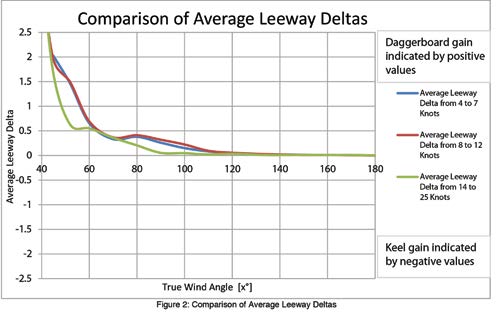
Counter to this, while still on a beam reach but when moving from a low wind condition to a high wind condition, the keel design begins to perform better. This is now taken from the green line (14 to 25 knot TWS range) and gives a -0.6 knot reading. Therefore the daggerboard design is now expected to be about 0.6 knots slower than the keel design under the new, higher TWS conditions.
Figure 2 is used in the same manner as Figure 1 but shows the leeway angle of each design rather than boat speed. Focusing again on a beam reaching condition, the leeway deltas indicate that the daggerboard will always out point the keel design as all three lines (TWS from 4 to 25 knots) indicate. positive values of 0.3, 0.35, and 0.1 degrees at 90 degrees TWA. Overall, Figure 2 shows that the daggerboard design has a significant gain in leeway over the keel design at all wind speeds and angles. This reaches a maximum when beating (TWA ±40-45 degrees) of 2 degrees, and declines to zero when running (TWA ±180 degrees).
With respect to the average boat speed deltas, Figure 1 shows that the daggerboard maintains a higher boat speed when sailing in light and medium winds (red and blue lines in Figure 1). In stronger conditions (green line) the daggerboards yield better boat speed when beating but the keel surpasses this between TWA of 60 to 145 degrees. Keeping in mind that the study was conducted with the daggerboards fully down at all times, in reality, the daggerboards will be raised in the 60 to 145 TWA range. As such the study slightly underestimates the speed of the daggerboard design over this TWA range.
Overall the daggerboard outperforms the keel in both boat speed and leeway in the vast majority of sailing conditions and is thus considered to be the better design choice if achieving ultimate performance is the key criteria. It should be noted that this study is specific to the Balance 526, but corresponding trends can be expected in performance cats of similar size and design.
In the end, and it is a point I cannot stress enough to any boat purchaser, all boats are sets of compromises and trade-offs, and so too with features – helm designs, sheeting systems, rig layouts, bimini designs, bed designs and locations, baths, engine placement, etc. Because I have been deeply involved in brokerage catamaran sales much of my life I recognize there is no one right or wrong boat, certainly no perfect boat, only a boat that happens to be a better fit for a particular sailor and his or her budget, cruising agenda and specific aesthetic proclivities.
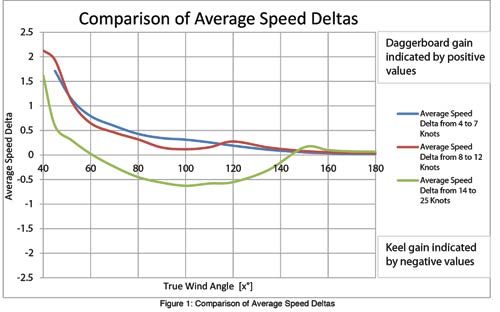
At least now we can say that if someone wants a 526 with keels, here is how she will perform compared to a boarded version. It is then up to the buyer to decide which configuration is the most appealing to them. I will say that, based on the five 526 we have sailing today, with over 60,000 miles of sailing behind them, those owners with keels seem quite happy, just as those with boards.
Alright spreadsheet guys, here’s your numbers to mess with!
Phil Berman is a former Hobie Cat World Champion and the founder of The Multihull Company, a global catamaran yacht brokerage firm. He is also the owner of Balance Catamarans, a boutique brand of high-end performance voyaging catamarans. He can be reached at [email protected] .
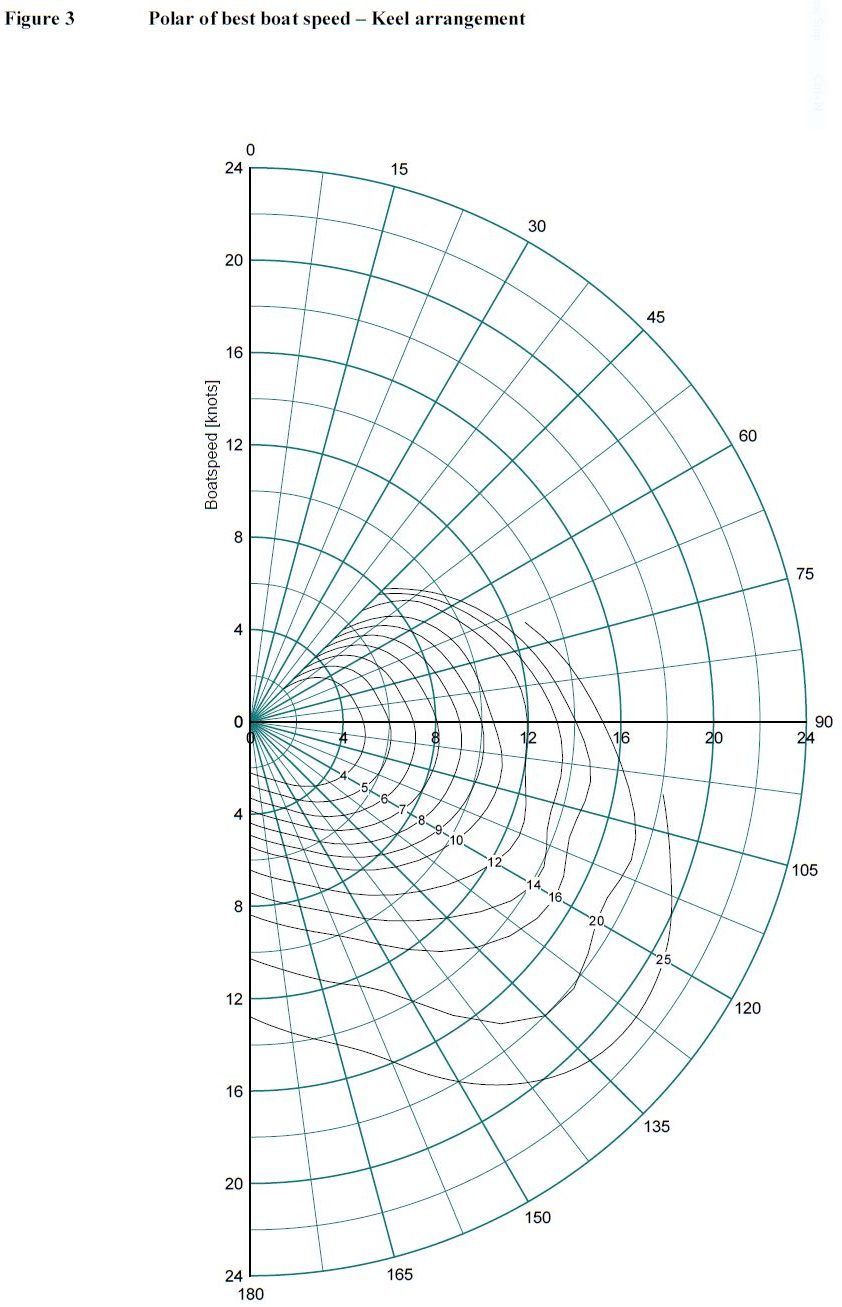
About Phillip Berman
- Are you a Spreadsheet Guy?
- Balance Catamarans is Born: A Bold Move in a Challenging Market
- Can a catamaran really sail upwind?
- Catamaran Depreciation
- Catamaran Vs Monohull
- Daggerboards vs. Keels
- Lessons Learned From A Free Spirit
- Placing a Boat Into Bare Boat Charter
- Post Survey Negotiations
- Saildrives or Straight Shafts? Which is Best For Me?
- Seller's Guide To Yacht Sales
- The 14 Biggest Mistakes When Purchasing a Used Catamaran and How to Avoid Them
- The 14 Biggest Mistakes When Purchasing a Used Cat…and How to Avoid Them Part Two
- The Perils of Internet Catamaran Shopping
- The Ten Commandments of Buying a Catamaran
Recent Posts
The multihull company announces the sale of the first pre-owned balance 482.
- Introducing the Tao 452: On Display At The Annapolis Boat Show October 12 - 15, 2023
Join Us At The Annapolis Boat Show Aboard the Voyage 590
The multihull company announced as dealer for the voyage 590, 6 great starter catamarans, ian edmonson joins tmc as yacht broker in fort pierce, fl., the multihull company opens new office in virginia, the multihull company named exclusive dealer for dolphin catamarans and their new model, the dolphin 380.
- Selling Your Catamaran in Panama
Visit Us at the 2023 Miami Boat Show
Categories: Articles , Articles by Phil Berman , Balance Catamarans , Catamaran Handling , Cruising Lifestyle , Design and Construction
Recent News
The Multihull Company is pleased to announce the closing on the Balance 482 "SeaLife" We wanted to take a moment and thank her new owners on their amazing new catamaran, and to also congratulate our team handling the sale. TMC agent Andrew Hodgdon successfully represented the buyers on the sale of the vessel, while TMC CEO Will Miller represented the...
The Multihull Company is pleased to announce their appointment as a dealer for Voyage Yachts and their new model – the Voyage 590! The Voyage 590 is being celebrated as the ultimate, luxury sailing catamaran with all the comforts of home surrounded by panoramic views of paradise. She maximizes luxury accommodation and comfort, with the performance and blue-water capability characteristic...
In early 2023, Cruising World approached us to seek our opinion on recommending a couple of brokerage catamaran options for first time catamaran buyers to consider when they first stepping into the catamaran market. Here are six boats hand-picked by The Multihull Company’s president and CEO, Capt. Will Miller, as excellent choices for brokerage-catamaran seekers. These are all worth a...
The Multihull Company, the world’s leader in multihull sales and service is excited to announce that it has been named the exclusive dealer for Dolphin Catamarans, a premier builder of high-quality catamarans, and their newest model, the Dolphin 380, designed by Philippe Pouvreau. "We are thrilled to be working with Dolphin Catamarans again and to be able to offer their...
The Multihull Company is thrilled to announce our participation in the Miami Boat Show, taking place on February 15-19, 2023. As one of the premier boat shows in the world, this event is the perfect platform for us to showcase our wide range of high-quality multihulls for sale. We are committed to providing our customers with the best experience possible,...
Introducing the Tao 452: On Display At The Annapolis Boat Show October 12 – 15, 2023
The Multihull Company is thrilled to unveil the new Tao 452, an exciting addition to the world of blue-water performance cruising catamarans. Meticulously engineered and crafted to perfection, the Tao 452 is set to redefine the catamaran experience for sailors worldwide. If you've ever felt the need for more sailing performance from your current production charter catamaran or been disappointed...
The Multihull Company is excited to announce its participation in this year's Annapolis Sailboat Show. The event will be held from October 12 - 15, 2023 in downtown Annapolis, and The Multihull Company will be showcasing the exquisite Voyage 590 catamaran from Voyage Yachts. The Annapolis Boat Show is a highly anticipated annual event that brings together boating enthusiasts, industry...
The Multihull Company is thrilled to announce the appointment of Ian Edmonson as a yacht broker at its newly opened Fort Pierce location. Ian brings a unique blend of boating passion, brokerage experience, real estate expertise, and customer-focused mentality to the team. Ian's love for boating began at an early age and has only continued to grow, leading him to...
We are thrilled to announce that Alan Prater has joined The Multihull Company team as a Yacht Broker in Virginia covering the Hampton Roads area of Virginia. With a lifelong passion for the water and a career spent in the US Navy and as a maritime training professional, Alan brings a wealth of experience and expertise to our team. Alan...
- Read All Articles
We take pride in our happy customers
Your team delivered on every mark. You’ve got an amazing broker in Mark Wattrus and I’m confident you will have continued success moving forward together. He was available 24/7 whenever I had questions. We had a great initial visit on the boat and his marketing plan and photos were superb
I bought a yacht that I had never seen. I did this because I trusted my broker Andrew Holland. It was not an easy job for Andrew, as I am an experienced boat builder and owner of previous yachts, but work in West Africa. Imagine how hard it was to communicate what I was looking for. Andrew came up with exactly what I wanted. He dealt with time delays, all my questions at odd hours, and was there for the survey. He reported honestly and professionally. After buying the yacht, I arrived at the boat on a Sunday night, after dark, after travelling from West Africa to the Caribbean, and found it was better than expected. He never pulled punches and made me aware of shortfalls. I expected to spend my one month leave working on the boat, but actually spent less than one week, and was able to spend 3 weeks sailing – wonderful bonus.
Thank you Andrew for putting up with all my questions, all my worries and all my crazy out of the time zone concerns – you were totally professional, but also I know that if and when we meet up, it will be like a friend finally meeting. You are always welcome on Aseka.
— Beverly Cory
Outstanding company with professional subject matter experts. If I were to buy or sell cruising sailboat, particularly a catamaran, Andrew would be my go to broker.
I have been sailing since I was a child and attended Massachusetts Maritime Academy. But when my wife and I began the process of purchasing an ocean cruising/racing catamaran, I realized that this is a world unto itself. Obviously, we needed to find someone knowledgeable to help us make an informed decision. More importantly, we needed someone honest and willing to put our interests before his or her own. I was lucky to work with Phil Berman at The Multihull Company. He repeatedly shunned the fast buck, choosing instead to work the long road to connect us with the “perfect boat”. I would be glad to recommend Phil and his company to anyone planning to purchase or sell a performance sailing machine.
— Eric Boutiette
Andrew Hodgdon was our broker when we bought our 2018 Lagoon 450F in Antigua in April 2922. He provided great service and was very attentive to our needs. We would highly recommend Andrew and the Multihull Company.
Trust & Expertise About Us
Successful relationships cannot exist without it. At The Multihull Company we base every relationship on a firm commitment to earning and retaining our client’s trust.
Advice of any kind is valuable only when grounded in hard-won expertise. It too, must be trustworthy. Trust and expertise define the heart and soul of The Multihull Company. We are a team of skilled professionals who thrive on providing expert, trustworthy advice and service to catamaran and trimaran sailors around the globe.
Follow us @themultihullcompany
- Pre-Owned Sales
Global Locations
New England +1-267-324-9067
Philadelphia +1-215-508-2704
Virginia +1-757-407-2526
Annapolis +1-703-350-8160
Charleston +1-843-364-4123
Brunswick +1-937-243-2213
Saint Augustine +1-910-477-2508
Fort Pierce +1-904-315-0997
West Palm Beach +1-561-312-0010
Ft. Lauderdale +1-484-744-2740
Miami +1-513-677-5338
San Francisco +1-215-508-2704
Seattle-Tacoma +1-206-297-1151
St. Martin +590 690 58 66 06
Grenada +1-473-457-3245
Puerto Rico +1-787-379-7348
Panama +1-305-735-1661
Trinidad +1-868-680-8909
Croatia +385 95 849 8009
France +33 (0) 6 73 97 17 30
Mauritius +1-215-508-2704
Australia +61 (0)7 5444 4822
Cape Town +1-843-614-2028
© Copyright 2024 The Multihull Company. All rights reserved.

Centerboard VS Daggerboard The Differences Explained
As an Amazon Associate, we earn from qualifying purchases. We may also earn commissions if you purchase products from other retailers after clicking on a link from our site.
Sailing life entails many words that at first make no sense; in this article, I will explain the difference between two types of underwater foils, centerboards and daggerboards.
On a sailboat, the difference between a daggerboard and a centerboard is how they are moved into position. A daggerboard is lifted and raised vertically (up and down) through a slot in the hull; a centerboard, on the other hand, pivots or swings into place.
That was the short answer. There are many more commonalities and differences worth discussing, such as the differences in performance and what happens if your daggerboard hits a reef? Will it break your hull?
Keep reading to understand all you need to know about daggerboards and centerboards!
Table of Contents
Centerboard
The centerboard is mounted horizontally on a rotating bolt at the foremost part of the foil (keep reading to understand what a foil is). It folds into a comparatively much longer slot in the hull than a daggerboard.
A centerboard comes in many different shapes and sizes, it can be combined with an already existing keel, or it can be larger and be more of a stand-alone type.
How is a centerboard operated?
The centerboard is operated through a lifting line fastened at the end of the centerboard fin(board); this line is manipulated either by hand or by a winch and, once fully retracted, will be tied to a cleat.
Daggerboard
The daggerboard, on the other hand, is mounted vertically inside a sliding slot in the hull, it gets it name from the movement, much like the stabbing motion of a dagger.
The board is stopped from moving too far and falling out because the top part is wider than the lower part.
How is a daggerboard operated?
It is manipulated much like the centerboard, through a lifting line and a winch. But instead of being attached through a bolt and swung into position, it is lowered down into place.
What are the differences?
Performance.
Since the differences mainly lie in the way of deployment, there are not that many big difference, but some smaller once worth noticing are;
The daggerboard doesnt have to be either fully up or fully down; this means the sailor can adjust the depth and effects to his or her needs. To low and there will be unnecessary drag, to high and there will be too little lift and too much drift to windward.
On the other hand, the centerboard pivots into position and is only really efficient as a foil once fully deployed.
Reducing the draft of a boat is very important if you want to sail in very shallow waters such as the Bahamas or if you want to beach your cat.
What is beaching a cat?
Once retracted, there is also a decreased chance of getting stuck or tangled up in a fishing net or other semi-floating objects and sometimes hard to see.
On boats where the keel is the lowest point on the boat, the propeller will be protected, but on ships where the center or daggerboard is the lowest spot, then retracting it will make it vulnerable to damage from whales, fishing nets, or coral. You will also not be able to beach your cat since the weight of the ship will be loaded on top of your prop shaft and most certainly will break it.
Once the boards are in a fully lifted position, there is an argument to be made that the centerboard, which has a much larger slot, will have higher drag. This is true, but only if the slot is poorly design and not hydrodynamically smooth, causing underwater turbulence.
A well-designed centerboard should be able to reduce the amount of drag to the same as a daggerboard.
What are the similarities?
Both systems can be mounted in pairs and at an angle; this makes the boards work much as an airplane wing does. Once the water starts passing around it, it will create higher water speeds on the upper side, lowering the pressure and increasing lift.
This makes for less underwater surface, decreases drag, increases speed, and fuel efficiency.
One issue often discussed on forums and with boat people is that a centerboard is safer since if an underwater object hits it, it will fold back into its slot, and no damage will be done. This is true to a degree but worthy of some explanation.
Firstly this is mainly a theoretical argument since an object is not certain to hit the board from straight on; this means that the idea of folding is no longer possible. The next thing to understand is that daggerboards are made to break; this is a safety aspect and makes sure that the hulls stay intact and that the boat will stay afloat.
This is similar to modern mini keels on catamarans; they too are constructed to detach if hit hard enough, the keels fall off, but the hull stays intact.
Both systems offer a risk of getting stuck; some say this is a bigger issue with daggerboards, and they more often fail than the centerboard style. This is not something that I have been able to confirm through any data, and looking at the design of newer daggerboards; there is no real reason to think that this should be the case.
There are many different systems on a sailboat, and everything that can move will sooner or later stop moving due to rust or being filled up with salt and sand. So will too these boards; this means extra time for maintenance and extra money to be spent keeping the systems in good shape.
Compared to each other many would argue that the centerboard is a somewhat simpler system and that they need less maintenance; I would say it is more up to the specific design than whether or not it is a centerboard.
Catamarans and Monohulls
The basic function of a foil is the same whether you’re on a catamaran or a monohull, although some aspect is specific for a cat.
A catamaran will always have two boards; these can be used together or separately. Since a catamaran behaves very differently in big seas than a monohull, the use of foils, especially during heavy weather, is essential to understand if wanting to stay safe.
One situation when catamarans can capsize is while being pushed horizontally by a big breaking wave hitting it from the side. If both boards are down, this will decrease the possible sliding motion and therefore increase the likelihood of capsizing.
This is a complex issue and if you want to undestand capsizing in detail i suggest you read this article;
Why do catamarans capsize
Owner of CatamaranFreedom.com. A minimalist that has lived in a caravan in Sweden, 35ft Monohull in the Bahamas, and right now in his self-built Van. He just started the next adventure, to circumnavigate the world on a Catamaran!
Leave a Reply Cancel reply
Your email address will not be published. Required fields are marked *
Save my name and email in this browser for the next time I comment.
Recent Posts
Must-Have Boat Gear for Catamaran Sailors!
Sailing is probably the most gear-intensive activity I've ever done; there are so many decisions to be made about what gear to buy now, for tomorrow, and what to definitely never buy. The gear on...
6 Best Trailerable Trimarans For Bluewater and Coastal Sailing
Having a boat costs a lot of money, even when you are not using it, marina fees, etc. And once it is in the water most sailors never go very far from their "home marina" and sailing will be somewhat...
Posted 2024-03-19 10:22
Contact Information:
Seawind 24 Catamaran - $10,300 (Scotch Plains)

QR Code Link to This Post
post id: 7728663258
posted: 2024-03-19 10:22
♥ best of [ ? ]
refresh the page.
Seawind 24 Catamaran - boats - by owner - marine sale - craigslist
Seawind 24 catamaran, trailer included Priced to sell! Recession proof sailing on a trailerable 24 ft LOA, 16 ft beam. Daggerboards and rotating rudders allow you to float in less than one foot of...

IMAGES
VIDEO
COMMENTS
The best cruising catamarans with daggerboards or centerboards provide great cruising capability, comfortable living, ease of handling, and strong construction. Based on different styles, designs, sizes, and prices, some of the best catamarans are Outremer 45, Catana 50, and Balance 526. If catamaran cruising is a passion you have been longing ...
Having a catamaran with daggerboards means enjoying better pointing ability than an equivalent model equipped with fixed stub keels, which are inevitably shorter. It means that you can also optimize drag, speed and even safety. Partially integrated, with foils...an inventory of the daggerboards on our boats and how to use these appendages.
After researching catamarans we have made a list of catamarans with daggerboards. Performance means a great deal for us, so we are looking at the pros and cons of daggerboards, and would like to share our knowledge in this article. If you know of any boats that should be included in this article, please let […]
Short Answer. Daggerboards are vertical boards on a catamaran that can be raised and lowered to provide lateral resistance and stability to the boat. When the daggerboards are lowered, they provide more stability and can help the catamaran sail closer to the wind. When they are raised, the catamaran has less resistance and can move faster.
In very light winds, the standard practice is to lift the windward daggerboard all the way and only trim the leeward board. When both daggerboards are down, (for simplicity) there is now double the 'underwater sail' area. This would likely imbalance how much power there is from the light winds on the sail above the water, and literally ...
Retractable daggerboards and electric outboard motors - beachable, higher pointing angles and less drag off the wind. ... Maine Cat is the only production catamaran builder in the world utilizing Core-Cell thermoforming coupled with vinylester resin infusion. The NEW Maine Cat 38 is stronger, lighter, and a blast to sail. ...
Woods 36 Vardo with Keels. So there's the two factors: one is the the sea kindliness of having daggerboards, and the other is the better performance. A daggerboarded boat is always better, but it does have some disadvantages. The main one is that if you want to beach your boat or dry it out.
The HH50 is for those seeking the perfect balance of performance and luxury in a size that can be easily managed by a couple. If you are looking for the ultimate blue-water capable catamaran, look no further than the 2021 "Boat of the Year," the HH50. Style. As with our HH55 and HH66, Morrelli & Melvin were brought into design the HH50.
The HH60 was born from a desire to take the already-stellar performance up another notch. A taller mast, longer longeron and deeper daggerboards ensure that the HH60 will outperform everything in its class. Every HH Catamaran is built using the very finest, strongest and lightest materials available.
Every single HH Catamaran daggerboard goes into our monster testing jig and we apply the full force of the known working load to fly a hull with two reefs and the two times "dynamic load factor". So, an HH66 board gets tested to a staggering 17,000kg, which is really scary. Even with our new HH50, the boards are tested all the way to 10 tons.
Your sails, keels, daggerboards and rudders when moving forward into the wind create high pressure of the windward side, and low pressure on the leeward side, and the boat is pulled forward, into the wind. Because the foil directs the boat around the curve of the foil, the boat is lifted forward, and to windward. This is also why airplanes fly.
Upwind, the daggerboards can push the draft down to just over 13 feet (4.00 m): we suspect that upwind course-keeping will be exceptional. The deck layout has two particularities: firstly, a cockpit that is as wide as it is streamlined, and secondly, twin helm and maneuvering stations at mid-height.
Currently I own two catamarans, one with daggerboards and one with keels. Over the last 30 years I have owned five cruising catamarans with keels, nine with daggerboards and one with one centerboard. Furthermore, I am one of the few designers who has fitted LAR keels and boards to the same hull (on Strider, Sagitta and Banshee) and then sailed ...
Daggerboards. Do you really need them on a cruising cat? Or is just for all the racers? In the second of our Technical Tuesday series on Catamaran design we ...
The other type of multihull is the catamaran with articulating daggerboards or centerboards. Centerboard and daggerboard multihulls both share the same basic concept, except their deployment and storage relies on different principles. The daggerboard lives in a scabbard, or daggerboard trunk. It moves up and down, vs. a pivoting centerboard ...
A catamaran with daggerboards is a type of sailing vessel that features two hulls connected by a platform known as the bridge deck. Unlike traditional catamarans, these innovative vessels are equipped with retractable keels called daggerboards which can be adjusted based on sailing conditions.
Daggerboards and going to wind. I built a 40ft catamaran back in the 90s called "Tokyo Express". A cruiser/racer that was lightweight and fast downwind and on a reach. But beating to wind was hard work; I covered a lot of ground fast but progress toward my destination was poor.
Daggerboards. The majority of today's cruising catamarans are equipped with mini keels for reliable and hassle-free operation. There are fewer than a handful of production daggerboard catamarans, which provide the sailor slightly more pointing ability and other advantages as illustrated in previous chapters. Their operation is generally ...
This is HH's first hybrid electric-powered catamaran although you can also opt for standard diesel power with shaft drives. There are 2 versions, like much of the HH range. ... model: HH44-SC and the Ocean Cruising model: HH44-OC. The SC version is a "no-compromise-boat" with C-shaped carbon daggerboards, a carbon rig, a painted hull ...
By: Phillip Berman, published with editor's permission from Boating NZ and Blue Water Sailing In my forty-five year career in the catamaran industry there's been a relentless debate on the virtues and vices of daggerboards versus fixed keels. This debate has, however, mostly been waged without "hard numbers" from which to compare performance differences. As we […]
High-performance cruising cats: High-performance cruising catamarans typically have efficient daggerboards or centerboards, deeper rudders, less windage and less displacement. They can go to windward at a 45-50 degree TWA in nearly all conditions. A performance cruising catamaran can typically outsail even the best keelboats to windward.
The next thing to understand is that daggerboards are made to break; this is a safety aspect and makes sure that the hulls stay intact and that the boat will stay afloat. This is similar to modern mini keels on catamarans; they too are constructed to detach if hit hard enough, the keels fall off, but the hull stays intact.
Collin Marshall - Kinetic Catamarans Commissioning Skipper and Sailing Systems, breaks down Centerboards vs Daggerboards. Kinetic has an option for either on the KC62 and KC54, owner preference.
Seawind 24 catamaran, trailer included ... Daggerboards and rotating rudders allow you to float in less than one foot of water and go upwind quite well. Hard decks and netting forward of the mast offer a very comfortable platform, easily accommodating a crowd while still light enough to go fast (flat water, moderate breeze will bring a big ...